Vernor Vinge
description: American mathematician, computer scientist, and science fiction writer
89 results
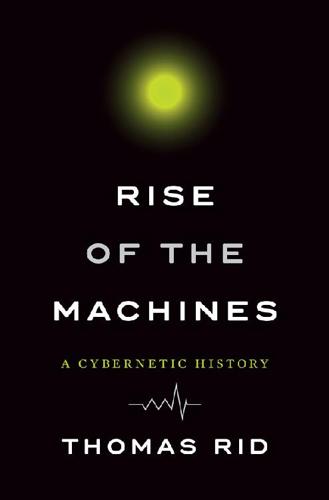
Rise of the Machines: A Cybernetic History
by
Thomas Rid
Published 27 Jun 2016
Kandebo, “Navy to Evaluate Agile Eye Helmet-Mounted Display System,” Aviation Week & Space Technology 128, no. 7 (August 15, 1988): 94. 29.Furness and Kocian, “Putting Humans into Virtual Space.” 30.Thomas A. Furness, “Fantastic Voyage,” Popular Mechanics 162, no. 12 (December 1986): 63. 31.Thomas A. Furness, “Harnessing Virtual Space,” Digest of Technical Papers (SID International Symposium), 1988, 4–7. 32.Ibid. 33.Vernor Vinge, True Names, in Binary Star #5, ed. George R. R. Martin and Vernor Vinge (New York: Dell, 1981). 34.James Frenkel and Vernor Vinge, True Names and the Opening of the Cyberspace Frontier (New York: Tor, 2001). 35.Vinge, True Names, 250. 36.Ibid. 37.Dmitry (Dima) Adamsky, “The 1983 Nuclear Crisis,” Journal of Strategic Studies 36, no. 1 (2013): 4–41. 38.One science fiction novel that is sometimes credited with articulating cyberspace as the “Metaverse” is Neal Stephenson, Snow Crash (New York: Bantam, 1992). 39.William Gibson, “Cyberpunk Era,” Whole Earth Review 63 (Summer 1989): 80. 40.
…
Bart Preneel, René Govaerts, and Joos Vandewalle, Lecture Notes in Computer Science 741 (Berlin: Springer, 1993), 174, 177. 18.Levy, Crypto, 213. 19.Andy Greenberg, This Machine Kills Secrets (New York: Dutton, 2012), 55–56. 20.Ibid., 56. 21.Vernor Vinge, True Names, in Binary Star #5, ed. George R. R. Martin and Vernor Vinge (New York: Dell, 1981), 35. 22.Timothy May, interview by the author, April 17, 2014. 23.Ibid. 24.Timothy C. May, “True Nyms and Crypto Anarchy,” in True Names and the Opening of the Cyberspace Frontier, ed. James Frenkel and Vernor Vinge (New York: Tor, 2001), 83. 25.Ibid. 26.Timothy C. May, “The Crypto Anarchist Manifesto,” e-mail to cypherpunks@toad.com, November 22, 1992.
…
One of the prime meeting places for science and science fiction at the time was Omni magazine. Founded by Bob Guccione, who also started Penthouse magazine, it was published in print between 1978 and 1995. Many futuristic ideas were either born or buried in Omni’s brightly illustrated pages. One example was science fiction writer Vernor Vinge’s word “singularity.” Having read Good, Vinge chose to describe the British scientist’s intelligence explosion as a “singularity,” the expected future moment when machines would overtake humans in their intellectual capacities.88 Vinge, himself an unsuccessful scientist at San Diego State University but a quite successful science fiction writer, compared that moment to a black hole: “When this happens,” he wrote in Omni in early 1983, “human history will have reached a transition as impenetrable as the knotted space-time at the center of a black hole, and the world will pass far beyond our understanding.”89 Meanwhile, a student in Germany was occupied with similar thoughts.

The Collected Stories of Vernor Vinge
by
Vernor Vinge
Published 30 Sep 2001
“Conquest by Default” Copyright © 1968 by Vernor Vinge. First published in Analog Science Fiction Science Fact. “The Whirligig of Time” Copyright © 1974 by Random House, Inc. First published in Stellar One, Ballantine Books. “Bomb Scare” Copyright © 1970 by Vernor Vinge. First published in Analog Science Fiction Science Fact. “The Science Fair” Copyright © 1971 by Vernor Vinge. First published in Orbit 9, G. P. Putnam’s Sons. “Gemstone” Copyright © 1983 by Vernor Vinge. First published in Analog Science Fiction Science Fact. “Just Peace” Copyright © 1971 by Vernor Vinge and William Rupp. First published in Analog Science Fiction Science Fact.
…
First published in Analog Science Fiction Science Fact. “Original Sin” Copyright © 1972 by Vernor Vinge. First published in Analog Science Fiction Science Fact. “The Blabber” Copyright © 1988 by Vernor Vinge. First published in Threats … and Other Promises, Baen Books. “Win a Nobel Prize!” Copyright © 2000 by Nature Publishing Group. This article was first published in Nature. “The Barbarian Princess” Copyright © 1986 by Vernor Vinge. First published in Analog Science Fiction and Science Fact. Fast Times at Fairmont High Copyright © 2001 by Vernor Vinge. Vernor Vinge’s commentary on a number of stories which appeared in the Baen Books collections True Names … and Other Dangers and Threats … and Other Promises appeared in substantially similar form in those collections.
…
Copyright Acknowledgments “Bookworm, Run!” Copyright © 1966 by Vernor Vinge. First published in Analog Science Fiction Science Fact. “The Accomplice” Copyright © 1967 by Galaxy Publishing Corporation. First published in Worlds of If Science Fiction. “The Peddler’s Apprentice” Copyright © 1975 by Joan D. Vinge and Vernor Vinge. First published in Analog Science Fiction Science Fact. “The Ungoverned” Copyright © 1985 by Vernor Vinge. First published in Far Frontiers, Baen Books. “Long Shot” Copyright © 1972 by Vernor Vinge. First published in Analog Science Fiction Science Fact. “Apartness” Copyright © 1965 by New Worlds SF.

Our Final Invention: Artificial Intelligence and the End of the Human Era
by
James Barrat
Published 30 Sep 2013
In fact, the competitive advantage—economic, military, even artistic—of every advance in automation is so compelling that passing laws, or having customs, that forbid such things merely assures that someone else will. —Vernor Vinge, The Coming Technological Singularity, 1993 This quotation sounds like a fleshed-out version of I. J. Good’s biographical aside, doesn’t it? Like Good, two-time Hugo Award-winning science fiction author and mathematics professor Vernor Vinge alludes to humans’ lemminglike predilection to chase glory into the cannon’s mouth, to borrow Shakespeare’s phrase. Vinge told me he’d never read Good’s self-penned biographical paragraphs, or learned about his late-in-life change of heart about the intelligence explosion.
…
Vinge told me he’d never read Good’s self-penned biographical paragraphs, or learned about his late-in-life change of heart about the intelligence explosion. Probably only Good, and Leslie Pendleton, knew about it. Vernor Vinge was the first person to formally use the word “singularity” when describing the technological future—he did it in a 1993 address to NASA, entitled “The Coming Technological Singularity.” Mathematician Stanislaw Ulam reported that he and polymath John von Neumann had used “singularity” in a conversation about technological change thirty-five years earlier, in 1958. But Vinge’s coinage was public, deliberate, and set the singularity ball rolling into the hands of Ray Kurzweil and what is today a Singularity movement.
…
Perhaps it was the science-fiction writers who felt the first concrete impact. After all, the “hard” science-fiction writers are the ones who try to write specific stories about all that technology may do for us. More and more, these writers felt an opaque wall across the future. AI researcher Ben Goertzel told me, “Vernor Vinge saw its inherent unknowability very clearly when he posited the notion of the technological singularity. It’s because of that that he doesn’t go around giving speeches about it because he doesn’t know what to say. What’s he going to say? ‘Yeah I think we’re going to create technologies that will be much more capable than humans and then who knows what will happen?’”

The Transhumanist Reader
by
Max More
and
Natasha Vita-More
Published 4 Mar 2013
Technological advance may come in fits and starts, eventually leading to a posthuman condition, but without any singular event. Part VIII clarifies and critically examines thinking about the singularity, starting with Vernor Vinge’s seminal essay. Anders Sandberg analyzes models of technological singularity in detail, looking for their commonalities and differences. The final essay in Part VIII collects the 1998 deliberations of a number of transhumanist thinkers to critically discuss the singularity, as initially defined by Vinge, in its technological and economic aspects. 35 Technological Singularity Vernor Vinge I. What is the Singularity? The acceleration of technological progress has been the central feature of this century.
…
Vinge, Vernor (1981) “True Names.” In Binary Star 5. New York: Dell. Vinge, Vernor (1983) “First Word.” Omni 10 (January). Earlier essay on “the Singularity.” “The Coming Technological Singularity: How to Survive in the Post-Human Era,” by Vernor Vinge, was presented at the VISION-21 Symposium sponsored by NASA Lewis Center and the Ohio Aerospace Institute, March 30–31, 1993. Copyright © Vernor Vinge 1993. http://www-rohan.sdsu.edu/faculty/vinge/misc/singularity.html 36 An Overview of Models of Technological Singularity Anders Sandberg This essay reviews different definitions and models of technological singularity.
…
Miller, Norman Hardy, and Christopher T. Hibbert “Diverse goods arbitration system and method for allocation resources in a distributed computer system” (Sun Microsystems, 1997); and with Norman Hardy, Linda L. Vetter “System and method for generating unique secure values for digitally signing documents” (2000). Vernor Vinge, PhD, is former Professor of Mathematics, University of California San Diego. He authored A Fire Upon the Deep (Tor, 1993, 2011); “The Coming Technological Singularity: How to Survive in the Post-Human Era” (Whole Earth Review, 1993); and True Names … and Other Dangers (Baen Book, 1987). Natasha Vita-More, PhD, is Professor of Design University of Advancing Technology, co-founder, Institute for Transhumanism, chairman of Humanity+, and co-editor of The Transhumanist Reader.
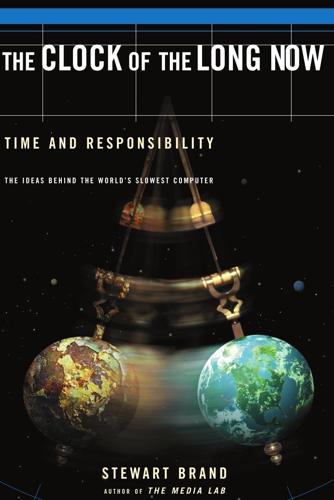
Clock of the Long Now
by
Stewart Brand
Published 1 Jan 1999
The beyond-dense anomaly in the center of the black hole is called a singularity. “At this singularity,” writes the Cambridge mathematician Stephen Hawking, “the laws of science and our ability to predict the future would break down.” The man who applied this metaphor to human events is the science fiction writer and mathematician Vernor Vinge. His 1991 novel Across Realtime joins three stories he wrote in the mid 1980s around a central mystery: What happened to everybody? While the characters in the stories were temporarily isolated out of time in devices called bobbles, civilization and the rest of humanity disappeared from Earth.
…
One such man, Ken McVay, undermined all the online Holocaust-denying discussion groups in this fashion, connecting them to a linked distributed archive of documentation proving that the Holocaust indeed took place. Metcalfe’s Law of exponential growth of the Net is proving to be even more significant than Moore’s Law of exponential growth of microchip capability. The chip is an individual’s tool; the Net is society’s tool. It may even become its own tool. As the science-fiction writer Vernor Vinge has suggested, the Net is supplied with so much computer power and is gaining so much massively parallel amplification of that power by its burgeoning connectivity that it might one day “wake up.” Brewster Kahle, of the Internet Archive, asks, “What happens when the library of human knowledge can process what it knows and provide advice?”
…
The nanotechnology futurist Eric Drexler concurs: “I have found over the years that people familiar with the science fiction classics find it much easier to think about the future, coming technologies, political effects of those technologies, and so on.” At Global Business Network (GBN), the scenario-planning business that employs me, we frequently send out science-fiction books to the Network membership, and when we can get writers such as William Gibson, Bruce Sterling, David Brin, and Vernor Vinge to attend scenario work-shops with client organizations, the quality of work deepens. Scenario planning involves exploring several widely variant futures of an organization’s world persuasively in depth. Skill in science fiction adds to the depth. Still, the most important developments in the future, says Freeman Dyson, keep being missed by both the forecasters and the storytellers: “Economic forecasting misses the real future because it has too short a range; fiction misses the future because it has too little imagination.”

More Everything Forever: AI Overlords, Space Empires, and Silicon Valley's Crusade to Control the Fate of Humanity
by
Adam Becker
Published 14 Jun 2025
Ulam, “John von Neumann, 1903–1957,” Bulletin of the American Mathematical Society 64, no. 3, part 2 (May 1958), www.ams.org/journals/bull/1958-64-03/S0002-9904-1958-10189-5/S0002-9904-1958-10189-5.pdf. 37 He had first written about the idea of the Singularity in a short opinion piece in Omni magazine three years earlier: Vernor Vinge, “First Word,” Omni, January 1983. 38 Vernor Vinge, Marooned in Realtime (New York: Baen Books, 1986), 313. 39 Vernor Vinge, “The Coming Technological Singularity: How to Survive in the Post-Human Era” (paper presented at Vision 21: Interdisciplinary Science and Engineering in the Era of Cyberspace, NASA Lewis Research Center, Cleveland, OH, March 30–31, 1993), https://edoras.sdsu.edu/~vinge/misc/singularity.html. 40 James Barrat, Our Final Invention: Artificial Intelligence and the End of the Human Era (New York: Thomas Dunne, 2013), 121. 41 Ed Regis, “Meet the Extropians,” Wired, October 1, 1994, www.wired.com/1994/10/extropians/. 42 Nick Bostrom, “A History of Transhumanist Thought,” Journal of Evolution and Technology 14, no. 1 (April 2005), https://jetpress.org/volume14/bostrom.pdf; Extropy: Vaccine for Future Shock, no. 1 (Fall 1988), 2, https://github.com/Extropians/Extropy/blob/master/Extropy-01.pdf.
…
“One conversation centered on the ever accelerating progress of technology and changes in the mode of human life, which gives the appearance of approaching some essential singularity in the history of the race beyond which human affairs, as we know them, could not continue.”36 Von Neumann himself never wrote about this idea. But decades after von Neumann’s death, Vernor Vinge took the concept—and the name “singularity”—and ran with it. Vinge was a computer scientist and mathematician by training, but he was best known for his science fiction novels, especially the Hugo Award–winning books A Fire Upon the Deep and its prequel A Deepness in the Sky. But it was an earlier novel, Marooned in Realtime, published in 1986, where Vinge introduced the idea of the Singularity to the readers of his fiction.37 In Marooned, Vinge used a post-Singularity civilization as a plot device: the characters awake in the far future after being placed in stasis, finding that human civilization has seemingly vanished or transcended to a new plane of existence, with a technological Singularity fingered as the likely culprit.
…
After finishing the eighth grade at age twelve, Yudkowsky dropped out of school, never to return.21 Instead, he kept reading copious amounts of science fact and fiction, including Drexler’s Engines of Creation. When he was sixteen, he came across a book called True Names… and Other Dangers, by one Vernor Vinge.22 Here, Vinge writes a couple of short sentences laying out the basic idea of the Singularity, claiming that when we create “intelligences greater than our own… human history will have reached a kind of singularity—a place where extrapolation breaks down and new models must be applied—and the world will pass beyond our understanding.”23 Reading these words, the young Yudkowsky was transformed.
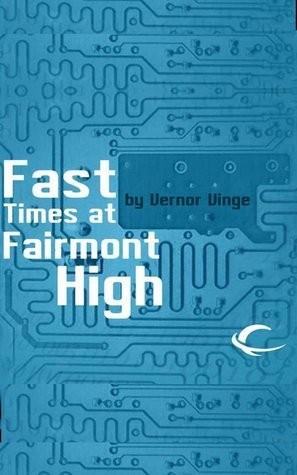
Fast Times at Fairmont High
by
Vernor Vinge
Published 1 Nov 2001
Fast Times at Fairmont High Vernor Vinge Vernor Vinge Fast Times at Fairmont High Juan kept the little blue pills in an unseen corner of his bedroom. They really were tiny, the custom creation of a lab that saw no need for inert fillers, or handsome packaging. And Juan was pretty sure they were blue, except that as a matter of principle he tried not to look at them, even when he was off-line. Just one pill a week gave him the edge he needed.... * * * Final exam week was always chaos at Fairmont Junior High. The school's motto was "Trying hard not to become obsolete"—and the kids figured that applied to the faculty more than anyone else.
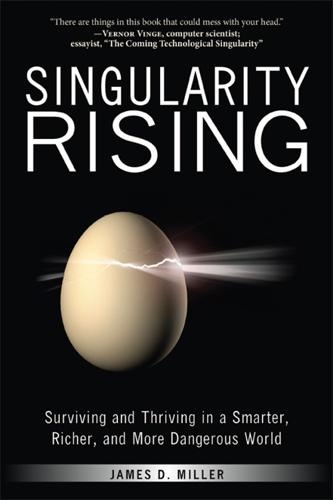
Singularity Rising: Surviving and Thriving in a Smarter, Richer, and More Dangerous World
by
James D. Miller
Published 14 Jun 2012
PRAISE FOR SINGULARITY RISING “There are things in this book that could mess with your head.” —Vernor Vinge, computer scientist; Hugo Award-winning author, A Fire Upon the Deep; essayist, “The Coming Technological Singularity” “The arrow of progress may kick upwards into a booming curve or it may terminate in an existential zero. What it will not do is carry on as before. With great insight and fore thought, Miller’s Singularity Rising prepares us for the forking paths ahead by teasing out the consequences of an artificial intelligence explosion and by staking red flags on the important technological problems of the next three decades.”
…
Science shows us the possibilities we could achieve; economic forces determine the possibilities we do achieve. But despite my understanding of economics, I admit that sometimes I get confused when thinking about a Singularity civilization. In the most important essay ever written on the Singularity, Vernor Vinge, a science fiction writer and former computer scientist, explained that accelerating technology was making it much harder for him to write science fiction because, as we progress toward the Singularity, “even the most radical [ideas] will quickly become commonplace.”25 Vinge has said that just as our models of physics break down when they try to comprehend what goes on at the Singularity of a black hole (its supposed point of infinite density), so might our models fail to predict what happens in an exponentially smarter world.26 Vinge told me that in the absence of some large-scale catastrophe, he would be surprised if there isn’t a Singularity by 2030.27 A father can much better predict how his six-year-old will behave in kindergarten than the child could predict what the father will do at work.
…
Donated $1.1 million to the Institute;91 •Ray Kurzweil—famed investor and Singularity writer; •Justin Rattner—Intel’s chief technology officer; •Eric Drexler—the father of nanotechnology; •Peter Norvig—Director of Research at Google; •Aubrey de Grey—leading longevity researcher; •Stephen Wolfram—developer of the computation platform Mathematica; and •Jaan Tallinn—founding engineer of Skype and self-made tech decamillionaire who donated $100,000.92 I also spoke on the economics of the Singularity at the Institute’s 2008 Summit. Given the superficial bizarreness of some of Eliezer’s beliefs (e.g., that an intelligence explosion could create an ultra-AI), the support he receives from these men is impressive. Eliezer initially encountered the idea of the Singularity when he read Vernor Vinge’s True Names . . . and Other Dangers.93 He knew at once that “this was what I would be doing with the rest of my life, creating the Singularity.”94 At first he wanted to create a superintelligence, any superintelligence “as fast as possible,” thinking that anything sufficiently smart would “automatically do what was ‘right.’”95 But then in 2002 Eliezer came to believe that he’d “been stupid”96 for not understanding that an ultra-AI not specifically designed for friendliness could extinguish humanity.

I Hate the Internet: A Novel
by
Jarett Kobek
Published 3 Nov 2016
He believed in a future where computers would reach a moment of technological singularity. The technological singularity was a bullshit phrase invented by the Science Fiction writer Vernor Vinge. The technological singularity was the name for a theoretical moment in the future when computers would achieve a critical mass of artificial intelligence and wake up and change everything. The way that computers would change everything is by emerging into consciousness and telling people like Ray Kurzweil and Vernor Vinge that they were fucking awesome. The computers and Ray Kurzweil and Vernor Vinge would hang out and kick back and rule the universe forever. This is not an exaggeration. This is what Ray Kurzweil believed.
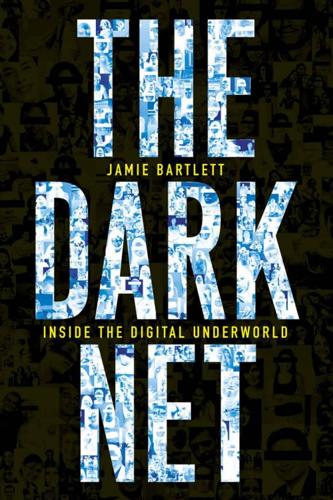
The Dark Net
by
Jamie Bartlett
Published 20 Aug 2014
Transhumanism’s roots are found in the ideas of science-fiction writers such as Isaac Asimov and the futurist biologist Julian Huxley, who coined the term ‘transhuman’ in 1957. (Nick Bostrom, a well-known transhumanist, says the desire to transcend human limitations is as old as the Sumerian Epic of Gilgamesh.) Transhumanism first became prominent in California in the early nineties, the watermark period of techno-optimism. In 1993, Vernor Vinge popularised the idea of the ‘Singularity’, the point at which artificial intelligence becomes so advanced that it begins to produce new and ever more advanced versions of itself, quickly leaving us mortals behind. Vinge hoped that transhumanists would ‘exploit the worldwide Internet as a combination human/machine tool . . . progress in this is proceeding the fastest and may run us into the Singularity before anything else.’
…
At one point in our interview he told me that he has instructed his wife to ‘stick me in the freezer’ if he dies unexpectedly.) Zerzan In the 2014 movie Transcendence, Johnny Depp plays a brilliant transhumanist scientist called Dr Caster – an Anders Sandberg type – who is building a hyperintelligent machine, in pursuit of Vernor Vinge’s Singularity moment. After a TED Talk (of course), Dr Caster is shot by a member of a radical anti-technology terrorist group called Revolutionary Independence From Technology (RIFT). RIFT are sabotaging the work of artificial intelligence laboratories all over the world. Shooting Dr Caster is part of the plan to disrupt what they see as the frightening march of technology.
…
More, M., ‘The Philosophy of Transhumanism’, in More, M. and Vita-More, N., The Transhumanist Reader: Classical and Contemporary Essays on the Science, Technology and Philosophy of the Human Future, p.4. p.223 ‘(Nick Bostrom, a well-known . . .’ http://www.nickbostrom.com/papers/history.pdf. p.224 ‘In 1993, Vernor Vinge popularised . . .’ ‘The Coming Technological Singularity: How to Survive in the Post-Human Era’, available here: https://www-rohan.sdsu.edu/faculty/vinge/misc/singularity.html; Good, I. J., ‘Speculations Concerning the First Ultraintelligent Machine’, Advances in Computers, vol.6. p.224 ‘By 1998, the burgeoning group . . .’ http://www.fhi.ox.ac.uk/a-history-of-transhumanist-thought.pdf; More, M. and Vita-More, N., The Transhumanist Reader, pp.54–5.

The Optimist: Sam Altman, OpenAI, and the Race to Invent the Future
by
Keach Hagey
Published 19 May 2025
Like Altman, Thiel had long been obsessed with the possibility that one day computers would become smarter than humans and unleash a self-reinforcing cycle of exponential technological progress, an old science fiction trope often referred to as “the singularity.” The term was first introduced by the mathematician and Manhattan Project advisor John von Neumann in the 1950s, and popularized by the acclaimed sci-fi author Vernor Vinge in the 1980s. Vinge’s friend Marc Stiegler, who worked on cybersecurity for the likes of DARPA while drafting futuristic novels, recalled once spending an afternoon with Vinge at a restaurant outside a sci-fi convention “swapping stories we would never write because they were both horrific and quite possible.
…
Skype co-founder Jaan Tallinn, who participated in the summit, was inspired by Yudkowsky to become one of the primary funders of research dedicated to reducing existential risk from AI, including by initially giving money to OpenAI and later switching to fund OpenAI’s rival, Anthropic. Another summit participant, physicist Max Tegmark, would go on to found the Future of Life Institute. Vernor Vinge himself even showed up, looking like a public school chemistry teacher with his Walter White glasses and tidy gray beard, cheerfully reminding the audience that when the singularity comes, “We’re no longer in the driver’s seat.”21 In 2010, one of the AI researchers who Yudkowsky invited to speak at the summit was Shane Legg, a New Zealand–born mathematician, computer scientist, and ballet dancer who had been obsessed with building superintelligence ever since Yudkowsky had introduced him to the idea a decade before.22 Legg had been working at IntelliGenesis, a New York–based startup founded by the computer scientist Ben Goertzel that was trying to develop the world’s first AI.
…
After brainstorming about all the various threats to humanity, he wrote, “there was broad consensus that although we should pay attention to biotech, nuclear weapons and climate change, our first major goal should be to help make AI-safety research mainstream.”2 Up to that point, many of the most prominent voices advocating for AI safety were not part of the community of researchers actually working on AI. The movement was led by people like Bostrom and Yudkowsky, who would also share the stage with Musk and Selman that afternoon, alongside Vernor Vinge and DeepMind’s Shane Legg, in a kind of reprise of the Singularity Summits of old. The goal of the Puerto Rico conference was to bring the philosophers and practitioners together to try to forge some common agreement, before the economic incentives of the latter made that impossible. “It was an important conference because it helped prevent one possible failure scenario, which would be where you would have two separate groups, the AI risk warriors and the people building AI.
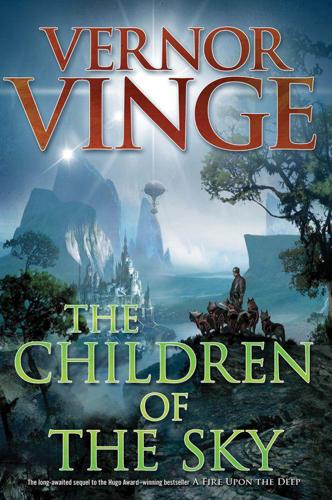
The Children of the Sky
by
Vernor Vinge
Published 11 Oct 2011
Down Here, we have the edge. The End ABOUT THE AUTHOR Vernor Vinge is the author of the Hugo Award–winning novels A Fire Upon the Deep, A Deepness in the Sky, and Rainbows End. His other novels include The Peace War and Marooned in Realtime. He also wrote the seminal short novel True Names. He has won two Hugo Awards for shorter works, and two Prometheus Awards for Best Libertarian Fiction. A mathematician and computer scientist noted as a visionary proponent of the Technological Singularity, he lives in San Diego, California. BOOKS BY VERNOR VINGE ZONES OF THOUGHT SERIES A Fire Upon the Deep* A Deepness in the Sky* The Children of the Sky* Tatja Grimm’s World* The Witling* The Peace War* Marooned in Realtime* True Names … and Other Dangers (collection) Threats … and Other Promises (collection) Across Realtime comprising: The Peace War “The Ungoverned” Marooned in Realtime True Names and the Opening of the Cyberspace Frontier* The Collected Stories of Vernor Vinge* Rainbows End* *Available from Tor Books This is a work of fiction.
…
BOOKS BY VERNOR VINGE ZONES OF THOUGHT SERIES A Fire Upon the Deep* A Deepness in the Sky* The Children of the Sky* Tatja Grimm’s World* The Witling* The Peace War* Marooned in Realtime* True Names … and Other Dangers (collection) Threats … and Other Promises (collection) Across Realtime comprising: The Peace War “The Ungoverned” Marooned in Realtime True Names and the Opening of the Cyberspace Frontier* The Collected Stories of Vernor Vinge* Rainbows End* *Available from Tor Books This is a work of fiction. All of the characters, organizations, and events portrayed in this novel are either products of the author’s imagination or are used fictitiously. THE CHILDREN OF THE SKY Copyright © 2011 by Vernor Vinge All rights reserved. Edited by James Frenkel Map by Ellisa Mitchell A Tor® eBook Published by Tom Doherty Associates, LLC 175 Fifth Avenue New York, NY 10010 www.tor-forge.com Tor® is a registered trademark of Tom Doherty Associates, LLC.
…
CONTENTS Title Page Dedication Acknowledgments Map Two years after the Battle on Starship Hill Chapter 00 Chapter 01 Chapter 02 Chapter 03 Three years after the Battle on Starship Hill Chapter 04 Ten years after the Battle on Starship Hill Chapter 05 Chapter 06 Chapter 07 Chapter 08 Chapter 09 Chapter 10 Chapter 11 Chapter 12 Chapter 13 Chapter 14 Chapter 15 Chapter 16 Chapter 17 Chapter 18 Chapter 19 Chapter 20 Chapter 21 Chapter 22 Chapter 23 Chapter 24 Chapter 25 Chapter 26 Chapter 27 Chapter 28 Chapter 29 Chapter 30 Chapter 31 Chapter 32 Chapter 33 Chapter 34 Chapter 35 Chapter 36 Chapter 37 Chapter 38 Chapter 39 Chapter 40 Chapter 41 Chapter 42 Chapter 43 Chapter 44 Chapter 45 About the Author Books by Vernor Vinge Copyright Two years after the Battle on Starship Hill CHAPTER 00 How do you get the attention of the richest businessperson in the world? Vendacious had spent all his well-remembered life sucking up to royalty. He had never dreamed he would fall so low as to need a common merchant, but here he was with his only remaining servant, trying to find a street address in East Home’s factory district.

The Rationalist's Guide to the Galaxy: Superintelligent AI and the Geeks Who Are Trying to Save Humanity's Future
by
Tom Chivers
Published 12 Jun 2019
When an object is massive enough and small enough, it bends spacetime so much that the usual laws of physics no longer work. By analogy, when intelligent systems start improving themselves fast enough, our usual ways of predicting the future – our assumptions that tomorrow will be essentially like today – will, say singularitarians, break down. The computer scientist and science-fiction writer Vernor Vinge wrote in 1983: ‘We will soon create intelligences greater than our own. When this happens, human history will have reached a kind of singularity, an intellectual transition as impenetrable as the knotted space-time at the centre of a black hole, and the world will pass far beyond our understanding.’2 Yudkowsky’s explicit goal in ‘Staring into the Singularity’ is to bring about AI – the singularity – as soon as possible.
…
It’s that (as we’ve discussed) it could destroy everything that we value, in the process of finding the most efficient way of maximising whatever it values. Chapter 12 The brief window of being human-level The best answer to the question, ‘Will computers ever be as smart as humans?’ is probably ‘Yes, but only briefly.’ Vernor Vinge, ‘Signs of the Singularity’1 We asked, earlier on, whether human-level AI is close, and obviously, different people have different ideas. On the whole, people tend to think it’s a number of decades away at least. There’s a separate question, though, which is: When it’s here, how long before it’s superhuman?
…
Scott Alexander, ‘Noisy poll results and reptilian Muslim climatologists from Mars’, 2013 http://slatestarcodex.com/2013/04/12/noisy-poll-results-and-reptilian-muslim-climatologists-from-mars/ 11: If I stop caring about chess, that won’t help me win any chess games, now will it? 1. Omohundro, ‘The basic AI drives’ https://selfawaresystems.files.wordpress.com/2008/01/ai_drives_final.pdf 12: The brief window of being human-level 1. Vernor Vinge, ‘Signs of the Singularity’, 2008 http://www.collier.sts.vt.edu/engl4874/pdfs/vinge_2008.pdf 2. Demis Hassabis, et al.,‘Mastering the game of Go with deep neural networks and tree search’, Nature, January 2016 https://www.nature.com/articles/nature16961 3. Miles Brundage, ‘AlphaGo and AI progress’, February 2016 http://www.milesbrundage.com/blog-posts/alphago-and-ai-progress 4.

Wired for War: The Robotics Revolution and Conflict in the 21st Century
by
P. W. Singer
Published 1 Jan 2010
Singer, December 7, 2006. 103 “the laws of science and our ability” As quoted in Garreau, Radical Evolution, 72. 103 “Google all the time” Peter Moon, “AI Will Surpass Human Intelligence After 2020,” TTworld.com, May 3, 2007 (cited May 30, 2007); available at http://www.itworld.com/Tech/3494/070503ai2020/. 103 “the Internet-based cognitive tools” Vernor Vinge, Rainbows End (New York: Tor Books, 2006), 5. 103 “The Coming Technological Singularity” Vernor Vinge, “The Coming Technological Singularity: How to Survive in the Post-Human Era” (paper presented at the VISION-21 Symposium, March 30-31, 1993). 103 “within thirty years” Ibid. 103 “point where our old models” Ibid. 104 “We are on the edge of change” Vinge, as quoted in Garreau, Radical Evolution, 71-72. 104 “It’s a future period” Kurzweil, The Singularity Is Near, 7. 104 “It’s not merely a technology” Robert Epstein, interview, Peter W.
…
Thornton, 1881), 170. 272 Information on how to build Ray Kurzweil, interview via phone, Peter W. Singer, Washington, DC, December 7, 2006. 272 “It feels like all ten billion of us” Garreau, Radical Evolution, 101. 272 “It is no exaggeration” Ibid., 207. 272 “Historically, warfare” Vernor Vinge, “Shaun Farrell Interviews Vernor Vinge,” Shaun Farrell, April 2006; available at http://www.farsector.com/quadrant/interview-vinge.htm. 272 “The future is manhunting” Special forces officer, interview, Peter W. Singer, September 7, 2006. 273 Skyshield, an automated machine-gun system Alon Ben-David, “New Model Army,” Jane’s Defence Weekly, October 11, 2006, 26. 273 the automated scanners can spot Tom Simonite, “Scanner Recognises Hidden Knives and Guns,” New Scientist, September 26, 2006, http://www.newscientisttech.com/article.ns?
…
Before the creation of the printing press and the singular break it created for society, it would have been simply impossible for those monks to imagine such things as mass literacy, the Reformation, or the Sports Illustrated swimsuit issue. The idea of a singularity in relation to computer technology first came from Vernor Vinge. Vinge is a noted mathematician and computer scientist, as well as an award-winning science fiction writer. His most recent novel, Rainbows End: A Novel with One Foot in the Future, is set in 2025. He describes a world in which people “Google all the time, everywhere, using wearable computers, and omnipresent sensors.”

Heart of the Machine: Our Future in a World of Artificial Emotional Intelligence
by
Richard Yonck
Published 7 Mar 2017
There are many reasons for this, which will be explored further in the next chapter. It’s worth discussing one more aspect of machine intelligence that has been explored extensively in fiction, but which originates in an essay from the late twentieth century. In 1993, mathematician and science fiction author Vernor Vinge wrote an article for the Whole Earth Review proposing that continuing exponential growth in computing power would ultimately result in recursively self-improving computers rapidly giving rise to a superintelligence. He called this event the “Singularity” because of its supposed similarity to a physical singularity—or black hole.8 Proponents of the concept maintain that as with a physical singularity, conditions would be so severely different beyond its horizon that it’s impossible to predict what the world would be like afterward.
…
I’m extremely appreciative to the following futurists for contributing their insights, many of which are included in chapter 12: Alisha Bhagat, senior futures advisor at Forum for the Future; Cindy Frewen of Frewen Architects; Thomas Frey of the DaVinci Institute; Brian David Johnson, former head futurist at Intel and founder of the 21st Century Robot Project; John Mahaffie, cofounder of Leading Futurists; Ian Pearson, former BT futurologist and founder of Futurizon; Karola Sajuns, brand strategist; and Roey Tzezana of the University of Tel Aviv. I’m also grateful to Vernor Vinge for speaking with me at length about the Singularity and numerous other ideas about the future, as well as AI scientists Ben Goertzel, José Hernández-Orallo, and David Dowe, who took the time to elaborate on their theories and models for me. While I appreciate the many editors and publications I’ve had the opportunity to write for over the years, I especially want to thank Cynthia Wagner for her guidance and support as longtime editor of The Futurist magazine.
…
In contrast, technological evolution follows a much more exponential pattern of growth, due at least in part to the positive feedback loops generated by prior advances. 3. A considerable volume of writing and research supports the concept of accelerating technological change, including the works of technologists Stanislaw Ulam, R. Buckminster Fuller, Ray Kurzweil, Vernor Vinge, and Kevin Kelly. 4. The Art of Human-Computer Interface Design. Laurel, B., Editor. Addison-Wesley. 1990. Chapter 1 1. “Emergence of Individuality in Genetically Identical Mice.” Julia Freund, Andreas M. Brandmaier, Lars Lewejohann, et al. Science, Vol. 340, No. 6133 (May 10, 2013), pp. 756–759, doi:10.1126/science.1235294. 2.
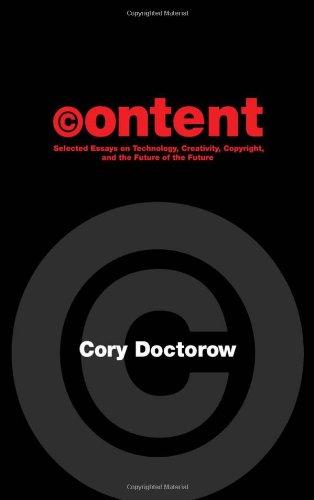
Content: Selected Essays on Technology, Creativity, Copyright, and the Future of the Future
by
Cory Doctorow
Published 15 Sep 2008
The very idea of "progress" runs counter to the idea of Lapsarianism and the fall: it is the idea that we, as a species, are falling in reverse, combing back the wild tangle of entropy into a neat, tidy braid. Of course, progress must also have a boundary condition — if only because we eventually run out of imaginary ways that the human condition can improve. And science fiction has a name for the upper bound of progress, a name for the progressive apocalypse: We call it the Singularity. Vernor Vinge's Singularity takes place when our technology reaches a stage that allows us to "upload" our minds into software, run them at faster, hotter speeds than our neurological wetware substrate allows for, and create multiple, parallel instances of ourselves. After the Singularity, nothing is predictable because everything is possible.
…
When the Singularity is More Than a Literary Device: An Interview with Futurist-Inventor Ray Kurzweil (Originally published in Asimov's Science Fiction Magazine, June 2005) It's not clear to me whether the Singularity is a technical belief system or a spiritual one. The Singularity — a notion that's crept into a lot of skiffy, and whose most articulate in-genre spokesmodel is Vernor Vinge — describes the black hole in history that will be created at the moment when human intelligence can be digitized. When the speed and scope of our cognition is hitched to the price-performance curve of microprocessors, our "progress" will double every eighteen months, and then every twelve months, and then every ten, and eventually, every five seconds.
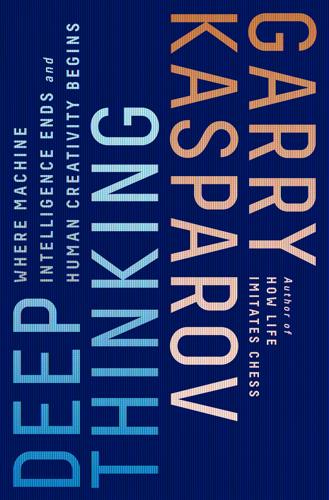
Deep Thinking: Where Machine Intelligence Ends and Human Creativity Begins
by
Garry Kasparov
Published 1 May 2017
Ian Goldin wrote an important book, Age of Discovery: Navigating the Risks and Rewards of Our New Renaissance, and left Oxford Martin in mid-2016. The new director is Achim Steiner. “the world will pass far beyond our understanding.” Vernor Vinge in an op-ed in Omni magazine, January 1983. “we will have the technological means to create superhuman intelligence.” Vernor Vinge, “The Coming Technological Singularity: How to Survive in the Post-Human Era,” originally in Vision-21: Interdisciplinary Science and Engineering in the Era of Cyberspace, G. A. Landis, ed., NASA Publication CP-10129, 11–22, 1993.
…
When the Association for the Advancement of Artificial Intelligence met in Monterey, California, in 2009, one of the topics its members discussed, and mostly discounted, was the likelihood of humans losing control of super-intelligent computers. This line of thought, that super-intelligent machines will surpass and possibly turn on their creators, has a long tradition. In a 1951 lecture, Alan Turing suggested that machines would “outstrip our feeble powers” and eventually “take control.” Computer scientist and science fiction author Vernor Vinge popularized the concept and coined the modern term for this tipping point, “the singularity,” in a 1983 essay. “We will soon create intelligences greater than our own. When this happens, human history will have reached a kind of singularity, an intellectual transition as impenetrable as the knotted space-time at the center of a black hole, and the world will pass far beyond our understanding.”
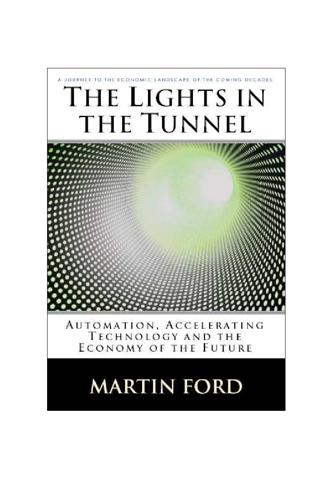
The Lights in the Tunnel
by
Martin Ford
Published 28 May 2011
World-renowned cosmologist and author of the book, A Brief History of Time, Stephen Hawking, has said, “Computers are likely to overtake humans in intelligence at some point in the next hundred years.”35 Inventor and author Ray Kurzweil, who received the National Medal of Technology from President Clinton in 1999, is far more optimistic and predicts that machines will achieve true intelligence by 2029. Kurzweil is also one of the leading proponents of the technological singularity, which he expects to occur by the year 2045.36 This concept, which was originally introduced by the mathematician and author Vernor Vinge,37 suggests that at some point in the future, technological progress will simply explode incomprehensibly. Basically, things will just get away from us. If you look at the now familiar chart that follows, the technological singularity would occur at some point close to where the line becomes nearly vertical.
…
Web: http://www.automationworld.com/webonly-320 34 Alan Greenspan, The Age of Turbulence, New York, The Penguin Press, 2007, p.397. 35 ABC News 20/20 Special, “Last Days on Earth”, 2006 36 Kurtzweil predicts the Technological Singularity by 2045: Fortune Magazine, May 14, 2007, Web: http://money.cnn.com/magazines/fortune/fortune_archive/2007/05/14/100008848/ 37 “Vernor Vinge on the Singularity,” Web: http://mindstalk.net/vinge/vinge-sing.html Chapter 3: Danger 38 Robert J. Shapiro, Futurecast: how superpowers, populations, and globalization will change the way you live and work, New York, St. Martin’s Press, 2008. 39 Thomas L. Friedman, The World is Flat: A Brief History of the Twenty First Century, New York, Farrar, Strause and Giroux, 2005, 2006. 40 China’s high saving rate the result of government policy, see: Eamonn Fingleton, In the Jaws of the Dragon: America’s Fate in the Coming Era of Chinese Hegemony, New York, St.

Superintelligence: Paths, Dangers, Strategies
by
Nick Bostrom
Published 3 Jun 2014
Observers in earlier epochs might have found it equally preposterous to suppose that the world economy would one day be doubling several times within a single lifespan. Yet that is the extraordinary condition we now take to be ordinary. The idea of a coming technological singularity has by now been widely popularized, starting with Vernor Vinge’s seminal essay and continuing with the writings of Ray Kurzweil and others.4 The term “singularity,” however, has been used confusedly in many disparate senses and has accreted an unholy (yet almost millenarian) aura of techno-utopian connotations.5 Since most of these meanings and connotations are irrelevant to our argument, we can gain clarity by dispensing with the “singularity” word in favor of more precise terminology.
…
But what of the seemingly more fanciful idea that the Internet might one day “wake up”? Could the Internet become something more than just the backbone of a loosely integrated collective superintelligence—something more like a virtual skull housing an emerging unified super-intellect? (This was one of the ways that superintelligence could arise according to Vernor Vinge’s influential 1993 essay, which coined the term “technological singularity.”83) Against this one could object that machine intelligence is hard enough to achieve through arduous engineering, and that it is incredible to suppose that it will arise spontaneously. However, the story need not be that some future version of the Internet suddenly becomes superintelligent by mere happenstance.
…
Scenarios involving machine intelligence could see the world population (including digital minds) explode by many orders of magnitude in a brief period of time. But that road to superintelligence involves artificial intelligence or whole brain emulation, so we need not consider it in this subsection. 83. Vinge (1993). CHAPTER 3: FORMS OF SUPERINTELLIGENCE 1. Vernor Vinge has used the term “weak superintelligence” to refer to such sped-up human minds (Vinge 1993). 2. For example, if a very fast system could do everything that any human could do except dance a mazurka, we should still call it a speed superintelligence. Our interest lies in those core cognitive capabilities that have economic or strategic significance. 3.

The Singularity Is Near: When Humans Transcend Biology
by
Ray Kurzweil
Published 14 Jul 2005
Joel Smoller and Blake Temple, "Shock-Wave Cosmology Inside a Black Hole," Proceedings of the National Academy of Sciences 100.20 (September 30, 2003): 11216–18. 19. Vernor Vinge, "First Word," Omni (January 1983): 10. 20. Ray Kurzweil, The Age of Intelligent Machines (Cambridge, Mass.: MIT Press, 1989). 21. Hans Moravec, Mind Children: The Future of Robot and Human Intelligence (Cambridge, Mass.: Harvard University Press, 1988). 22. Vernor Vinge, "The Coming Technological Singularity: How to Survive in the Post-Human Era," VISION-21 Symposium, sponsored by the NASA Lewis Research Center and the Ohio Aerospace Institute, March 1993.
…
Now, by creating the means to execute those simulations at much higher speeds, we are entering a regime as radically different from our human past as we humans are from the lower animals. From the human point of view, this change will be a throwing away of all the previous rules, perhaps in the blink of an eye, an exponential runaway beyond any hope of control. —VERNOR VINGE, "THE TECHNOLOGICAL SINGULARITY," 1993 Let an ultraintelligent machine be defined as a machine that can far surpass all the intellectual activities of any man however clever. Since the design of machines is one of these intellectual activities, an ultraintelligent machine could design even better machines; there would then unquestionably be an "intelligence explosion," and the intelligence of man would be left far behind.
…
The first reference to the Singularity as an event capable of rupturing the fabric of human history is John von Neumann's statement quoted above. In the 1960s, I. J. Good wrote of an "intelligence explosion" resulting from intelligent machines' designing their next generation without human intervention. Vernor Vinge, a mathematician and computer scientist at San Diego State University, wrote about a rapidly approaching "technological singularity" in an article for Omni magazine in 1983 and in a science-fiction novel, Marooned in Realtime, in 1986.19 My 1989 book, The Age of Intelligent Machines, presented a future headed inevitably toward machines greatly exceeding human intelligence in the first half of the twenty-first century.20 Hans Moravec's 1988 book Mind Children came to a similar conclusion by analyzing the progression of robotics.21 In 1993 Vinge presented a paper to a NASA-organized symposium that described the Singularity as an impending event resulting primarily from the advent of "entities with greater than human intelligence," which Vinge saw as the harbinger of a runaway phenomenon.22 My 1999 book, The Age of Spiritual Machines: When Computers Exceed Human Intelligence, described the increasingly intimate connection between our biological intelligence and the artificial intelligence we are creating.23 Hans Moravec's book Robot: Mere Machine to Transcendent Mind, also published in 1999, described the robots of the 2040s as our "evolutionary heirs," machines that will "grow from us, learn our skills, and share our goals and values, ... children of our minds."24 Australian scholar Damien Broderick's 1997 and 2001 books, both titled The Spike, analyzed the pervasive impact of the extreme phase of technology acceleration anticipated within several decades.25 In an extensive series of writings, John Smart has described the Singularity as the inevitable result of what he calls "MEST" (matter, energy, space, and time) compression.26 From my perspective, the Singularity has many faces.
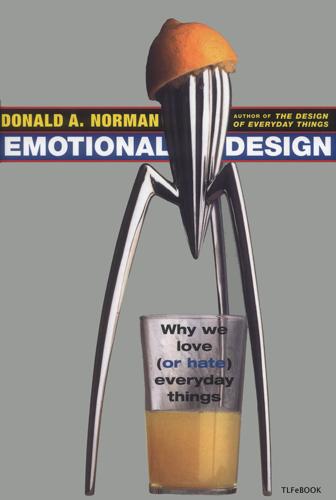
Emotional design: why we love (or hate) everyday things
by
Donald A. Norman
Published 10 May 2005
People love the power of cell phone interaction, but do not seem to love any of the devices that make it possible. As a result, the turnover of devices is high. There is no product loyalty, no commitment to company or service provider. The cell phone, one of the most fundamentally emotional services, garners little attachment to its products. Vernor Vinge, one of my favorite science fiction writers, wrote A Fire Upon the Deep, in which the planet Tines is populated by animals with a collective intelligence. These doglike creatures travel in packs, whose members are in continuous acoustical communication with one another, giving rise to a powerful, distributed consciousness.
…
Thanks to John King, Dean of the School of Information at University of Michigan for the quotation from Seneca. 150 "Instant messenger." Responses to my request to an on-line discussion group on design to tell me products they love or hate (Dec. 2002). The two paragraphs in this example were written by different people. 151 "Vernor Vinge, one of my favorite" (Vinge, 1993) 154 "Attention span . . . ten seconds." I believe it is in James's Principles of Psychology (James, 1890), but although I have relied on this quotation for more than thirty years, it is also more than thirty years since I read it. Try as I might, I have been unable to find it again in order to provide a proper bibliographic reference. 154 "We carve out our own private spaces."

Thinking Machines: The Inside Story of Artificial Intelligence and Our Race to Build the Future
by
Luke Dormehl
Published 10 Aug 2016
The Singularity The year after Good wrote his essay, a short story appeared in the March 1966 issue of Analog Science Fiction magazine. Called ‘Bookworm, Run!’, it told the pulpy story of a brain which is artificially augmented by being plugged directly into computerised data sources. This was the first published work of Vernor Vinge, a sci-fi writer, mathematics professor and computer scientist with a name straight out of the Marvel Comics alliteration camp. Vinge later became a successful novelist, but he remains best known for his 1993 non-fiction essay, ‘The Coming Technological Singularity’. The essay recounts many of the ideas Good had posed about superintelligent machines, but with the added bonus of a timeline.
…
Recalling the conversation later, Ulam noted that von Neumann was fascinated – and perhaps alarmed – by ‘the ever-accelerating progress of technology and changes in the mode of human life, which gives the appearance of approaching some essential singularity in the history of the race beyond which human affairs, as we know them, could not continue’. Like Good, Vernor Vinge did not draw explicit conclusions in his 1993 essay. Should the Singularity take place, he acknowledged that its effects could be either good or bad. ‘From one angle, the vision fits many of our happiest dreams,’ he wrote. ‘[It could well be] a place unending, where we can truly know one another and understand the deepest mysteries.
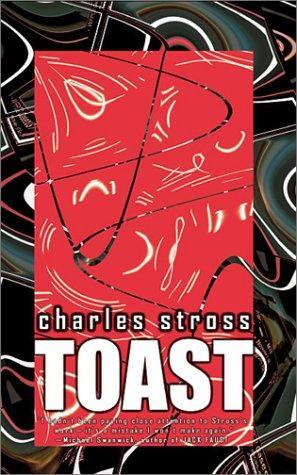
Toast
by
Stross, Charles
Published 1 Jan 2002
Yellow Snow is also looking distinctly yellowed around the edges, ten years on, with the Human Genome Project a nearly done deal. Part of the problem facing any contemporary hard SF writer is the fogbank of accelerating change that has boiled up out of nowhere to swallow our proximate future. Computer scientist and author Vernor Vinge coined the term “singularity” to describe this; a singularity, in mathematics, is the point towards which an exponential curve tends. At the singularity, the rate of change of technology becomes infinite; we can’t predict what lies beyond it. In a frightening essay on the taxonomy of artificial intelligence, published in Whole Earth Review in 1994, Vinge pointed out that if it is possible to create an artificial intelligence (specifically a conscious software construct) equivalent to a human mind, then it is possible to create one that is faster than a human mind—just run it on a faster computer.
…
It started with an idea: is it possible to write a hard SF story—one where relentless extrapolation from a technological or scientific assumption forms the backbone of the plot—based on algorithmics, the core of computer science, rather than on physics or biology? And one that has cosmological implications, rather than merely being a story about the birth of a better spreadsheet? The answer (as Vernor Vinge has repeatedly demonstrated) is “yes,” but it took me a while to get there for myself. Everyone remembers where they were and what they were doing when a member of the great and the good is assassinated. Ghandi, the Pope, Thatcher—if you were old enough you remembered where you were when you heard, the ticker-tape of history etched across your senses.

Physics of the Future: How Science Will Shape Human Destiny and Our Daily Lives by the Year 2100
by
Michio Kaku
Published 15 Mar 2011
It may take decades to slowly climb this path, but they believe that it is only a matter of time before the machines exceed us in intelligence. AI researchers are split on the question of when this might happen. Some say that within twenty years robots will approach the intelligence of the human brain and then leave us in the dust. In 1993, Vernor Vinge said, “Within thirty years, we will have the technological means to create superhuman intelligence. Shortly after, the human era will be ended …. I’ll be surprised if this event occurs before 2005 or after 2030.” On the other hand, Douglas Hofstadter, author of Gödel, Escher, Bach, says, “I’d be very surprised if anything remotely like this happened in the next 100 years to 200 years.”
…
Ulam wrote, “One conversation centered on the ever accelerating progress of technology and changes in the mode of human life, which gives the appearance of approaching some essential singularity in the history of the human race beyond which human affairs, as we know them, could not continue.” Versions of the idea have been kicking around for decades. But it was then amplified and popularized by science fiction writer and mathematician Vernor Vinge in his novels and essays. But this leaves the crucial question unanswered: When will the singularity take place? Within our lifetimes? Perhaps in the next century? Or never? We recall that the participants at the 2009 Asilomar conference put the date at any time between 20 to 1,000 years into the future.
…
Harlow, M.D., “Passage of an Iron Rod Through the Head,” Journal of Neuropsychiatry and Clinical Neurosciences 11, May 1999, pp. 281–83, www.neuro.psychiatryonline.org/cgi/content/full/11/2/281. 12 “It is not impossible to build a human brain”: Jonathan Fildes, “Artificial Brain ‘10 Years Away,’ ” BBC News, July 22, 2009, http://news.bbc.co.uk/2/hi/8164060.stm. 13 “It’s not a question of years”: Jason Palmer, “Simulated Brain Closer to Thought,” BBC News, April 22, 2009, http://news.bbc.co.uk/2/hi/sci/tech/8012496.stm. 14 “This is a Hubble Telescope of the mind … it’s inevitable”: Douglas Fox, “IBM Reveals the Biggest Artificial Brain of All Time,” Popular Mechanics, December 18, 2009, www.popularmechanics.com/technology/engineering/extreme-machines/4337190. 15 “After we solve this”: Sally Adee, “Reverse Engineering the Brain,” IEEE Spectrum, June 2008, http://spectrum.ieee.org/biomedical/ethics/reverse-engineering-the-brain/0. 16 “Within thirty years”: Vernor Vinge, “What Is the Singularity?” paper presented at the VISION-21 Symposium sponsored by NASA Lewis Research Center and the Ohio Aerospace Institute, March 30–31, 1993. A slightly changed version appeared in Whole Earth Review, Winter 1993, http://mindstalk.net/vinge/vinge-sing.html. 17 “I’d be very surprised if anything remotely like this happened”: Tom Abate, “Smarter Than Thou?
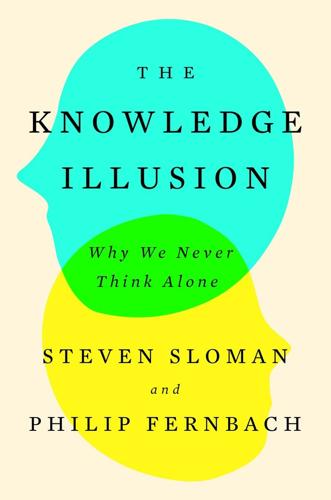
The Knowledge Illusion
by
Steven Sloman
Published 10 Feb 2017
Some of our greatest entrepreneurs and scientific minds see even darker clouds on the horizon. People like Elon Musk, Stephen Hawking, and Bill Gates have cautioned that technology could become so sophisticated that it decides to pursue its own goals rather than the goals of the humans who created it. The reason to worry has been articulated by Vernor Vinge in a 1993 essay entitled “The Coming Technological Singularity,” as well as by Ray Kurzweil in his 2005 book The Singularity Is Near: When Humans Transcend Biology, and most recently by Swedish philosopher Nick Bostrom, who works at the University of Oxford. In Bostrom’s language, the fear is that technology is advancing so fast that the development of a superintelligence is imminent.
…
few people today read Alice in Wonderland: A fact bemoaned by Anthony Lane in “Go Ask Alice,” The New Yorker, June 8 and 15, 2015. SEVEN. THINKING WITH TECHNOLOGY commuting a little less: www.governing.com/topics/transportation-infrastructure/how-america-stopped-commuting.html. attendance at movie theaters: www.slashfilm.com/box-office-attendance-hits-lowest-level-five-years. Vernor Vinge: V. Vinge (1993). “The Coming Technological Singularity.” Whole Earth Review, Winter. Ray Kurzweil: R. Kurzweil (2005). The Singularity Is Near: When Humans Transcend Biology. New York: Penguin Books. Nick Bostrom: N. Bostrom (2014). Superintelligence: Paths, Dangers, Strategies. Oxford, UK: Oxford University Press.
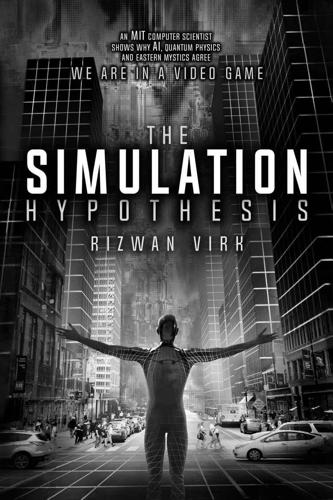
The Simulation Hypothesis
by
Rizwan Virk
Published 31 Mar 2019
The origins of this use of the term singularity date back to the 1950s, at which time mathematician John von Neumann supposedly coined the term when he said, “The ever-accelerating progress of technology ... gives the appearance of approaching some essential singularity in the history of the race beyond which human affairs, as we know them, could not continue.”17 Irving John Good, another mathematician, was one of the first to call super-intelligent AI the “last invention that man need make.” Of course, there weren’t that many people thinking about the singularity outside of science fiction and a few computer scientists at the time. In fact, the term was popularized by science fiction writer (and computer scientist) Vernor Vinge in a 1993 paper he wrote titled, “The Technological Singularity,” in which he defined it as a “singular point” after which everything will be different. Although the term has picked up steam because of the development of AI to the point of becoming super-intelligent, this is only one of the several possibilities that Vinge puts forth in his original paper: Science may achieve this breakthrough by several means (and this is another reason for having confidence that the event will occur): Computers that are "awake" and superhumanly intelligent may be developed.
…
. [←14] https://commons.wikimedia.org/wiki/File:Sophia_at_the_AI_for_Good_Global_Summit_2018_(27254369347).jpg [←15] https://www.theverge.com/2017/11/10/16617092/sophia-the-robot-citizen-ai-hanson-robotics-ben-goertzel [←16] https://en.wikipedia.org/wiki/Three_Laws_of_Robotics [←17] Ray Kurzweil, The Singularity Is Near, (New York: Penguin, 2005), 10. [←18] Vernor Vinge, “Technological Singularity” (1993), https://www.frc.ri.cmu.edu/~hpm/book98/com.ch1/vinge.singularity.html [←19] https://www.technologyreview.com/s/612257/digital-version-after-death/ [←20] Nick Bostrom, “Are You Living in a Computer Simulation?” Philosophical Quarterly (2003) Vol.53, No.211, pp.243‐255. [←21] Max Tegmark, Life 3.0: Being Human in the Age of Artificial Intelligence (New York: Alfred A.

The Myth of Artificial Intelligence: Why Computers Can't Think the Way We Do
by
Erik J. Larson
Published 5 Apr 2021
Prediction would become impossible. Progress would no longer be a known variable (if it ever was). Von Neumann, in other words, suggested to Ulam an eschatology, a possible end of times. A couple decades later, Good thought he’d found the mechanism: the digital computer. UCLA computer scientist and Hugo award-winner Vernor Vinge introduced “Singularity” into computation, and specifically into artificial intelligence, in 1986, in his science-fiction book Marooned in Realtime.3 In a later technical paper for NASA, Vinge channeled Good: “Within thirty years, we will have the technological means to create superhuman intelligence.
…
Technically, Vinge introduced the term singularity three years earlier, in a January 1983 article in Omni magazine titled “First Word.” It is common, however, to trace the word and Vinge’s use of it back to his sci-fi book Marooned in Realtime, where the concept was fully developed in the plot of the story. 4. Vernor Vinge, “The Coming Technological Singularity: How to Survive in the Post-Human Era,” in Vision-21: Interdisciplinary Science and Engineering in the Era of Cyberspace, ed. G. A. Landis, NASA Publication CP-10129, 1993, 11–22. 5. Ray Kurzweil, The Singularity is Near: When Humans Transcend Biology (New York: Penguin Group, 2005). 6.
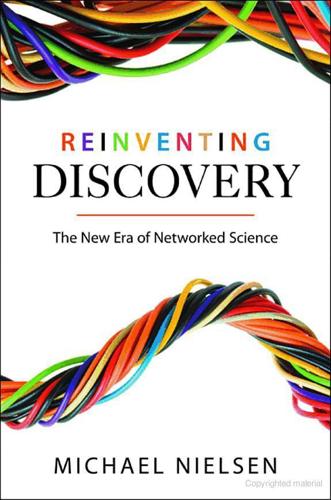
Reinventing Discovery: The New Era of Networked Science
by
Michael Nielsen
Published 2 Oct 2011
Such discussion can be found in many of the works describd above, in particular the work of Vannevar Bush [31] and Douglas Engelbart [63]. Other notable works include those of Eric Drexler [57], Jon Udell [227], Christine Borgman [23], and Jim Gray [83]. See also Tim Berners-Lee’s original proposal for the world wide web, reprinted in [14]. A stimulating and enjoyable fictional depiction of networked science is Vernor Vinge’s Rainbows End [231]. Data-driven science: One of the first people to understand and clearly articulate the value of data-driven science was Jim Gray, of Microsoft Research. Many of his ideas are summarized in the essay [83], which I also mentioned above. That essay is part of a stimulating book of essays entitled The Fourth Paradigm [94].
…
Jon Udell’s Radio blog, March 4, 2002. http://radio-weblogs.com/0100887/2002/03/04.html. [229] UK Medical Research Council policy on data sharing and preservation. http://www.mrc.ac.uk/Ourresearch/Ethicsresearchguidance/ Datasharinginitiative/Policy/index.htm. [230] Edna Ullmann-Margalit. Invisible-hand explanations. Synthese, 39(2): 263–291, 1978. [231] Vernor Vinge. Rainbows End. New York: Tor, 2007. [232] Steven S. Vogt, R. Paul Butler, Eugenio J. Rivera, Nader Haghighipour, Gregory W. Henry, and Michael H. Williamson. The Lick-Carnegie Exoplanet Survey: A 3.1 M_Earth planet in the habitable zone of the nearby M3V star Gliese 581. eprint arXiv:1009.5733, 2010

Ghost Road: Beyond the Driverless Car
by
Anthony M. Townsend
Published 15 Jun 2020
But what cities will get in return is ownership and control of this vital virtual infrastructure. Go with Coord, and you’ll get a turn-key system. But you’ll have to license the data about your own streets to actually use it—and so will every mobility provider, big and small, that wants to roll through your town. Singularities and Singletons In 1993, science fiction author Vernor Vinge made a daring prediction. “Within thirty years, we will have the technological means to create superhuman intelligence,” he wrote. “Shortly after, the human era will be ended.” Computer power was increasing so fast, exponentially so, Vinge argued, that it would soon produce a series of breakthroughs—all-knowing supercomputers, networked brains spanning the internet, interfaces that would blur the boundary between human and machine minds, and biological enhancements to increase intelligence.
…
Ann Arbor, MLive, October 6, 2017, https://www.mlive.com/news/ann-arbor/index.ssf/2017/10/can_ self-driving_pizza_deliver.html. 231“classified [Elaine Herzberg] as something other”: Ryan Felton, “Video Shows Driver in Autonomous Uber Was Looking Down Moments before Fatal Crash,” Jalopnik, March 21, 2018, https://jalopnik.com/video-shows-driver-in-fatal-autonomous-uber-crash-was-l-1823970417. 231computer-vision algorithms: Katyanna Quach, “Racist Self-Driving Scare Debunked, inside AI Black Boxes, Google Helps Folks Go with TensorFlow,” The Register, March 10, 2019, https://www.theregister.co.uk/2019/03/10/ai_ roundup_080319/. 231marking of pavement to help orient drivers: Bill Loomis, “1900–1930: The Years of Driving Dangerously,” Detroit News, April 26, 2015, https://www.detroitnews.com/story/news/local/michigan-history/2015/04/26/auto-traffic-history-detroit/26312107/. 232dinged for excessive idling: Andrew Small, “CityLab Daily: The Race to Code the Curb,” CityLab, April 2, 2019, https://www.citylab.com/authors/andrew-small/. 233“cities need to invest in the mapping in ways”: Kevin Webb (@kvnwebb), “We’re building smart ways to encode information like curb regulation,” Twitter, November 30, 2018, 1:41 a.m., https://twitter.com/kvnweb/status/1068485225607585798. 234“an exponential runaway beyond”: Vernor Vinge, “The Coming Technological Singularity: How to Survive in the Post-Human Era,” VISION-21 Symposium, NASA Lewis Research Center and Ohio Aerospace Institute, March 30–31, 1993, https://edoras.sdsu.edu/~vinge/misc/singularity.html. 234John von Neumann had raised: John Brockman, Possible Minds (New York: Penguin Press, 2019), 8. 234“AI enthusiasts have been making claims”: Vinge, “The Coming Technological Singularity.” 234“I have set the date 2045”: Christianna Reddy, “Kurzweil Claims That the Singularity Will Happen by 2045,” Futurism, October 5, 2017, https://futurism.com/kurzweil-claims-that-the-singularity-will-happen-by-2045/. 235“machine learning” to disguise the true nature: Chris Smith et al., “The History of Artificial Intelligence,” University of Washington, December 2006, https://courses.cs.washington.edu/courses/csep590/06au/projects/his tory-ai.pdf. 235“a deep level of understanding”: Rodney Brooks, “Post: [For&AI] The Origins of Artificial Intelligence,” Robots, AI, and Other Stuff (blog), April 27, 2018, https://rodneybrooks.com/forai-the-origins-of-artificial-intelligence/. 235“Contemporary neural networks do well on challenges”: Gary Marcus, “Deep Learning: A Critical Appraisal,” New York University, accessed January 22, 2019, https://arxiv.org/pdf/1801.00631.pdf. 236“If . . . driverless cars should also disappoint”: Marcus, “Deep Learning.” 236Frey tallied his predictions of the jobs: Carl Benedikt Frey and Michael A.

Rise of the Robots: Technology and the Threat of a Jobless Future
by
Martin Ford
Published 4 May 2015
The Singularity The first application of the term “singularity” to a future technology-driven event is usually credited to computer pioneer John von Neumann, who reportedly said sometime in the 1950s that “ever accelerating progress . . . gives the appearance of approaching some essential singularity in the history of the race beyond which human affairs, as we know them, could not continue.”5 The theme was fleshed out in 1993 by San Diego State University mathematician Vernor Vinge, who wrote a paper entitled “The Coming Technological Singularity.” Vinge, who is not given to understatement, began his paper by writing that “[w]ithin thirty years, we will have the technological means to create superhuman intelligence. Shortly after, the human era will be ended.”6 In astrophysics, a singularity refers to the point within a black hole where the normal laws of physics break down.
…
Yann LeCun, Google+ Post, October 28, 2013, https://plus.google.com/+YannLeCunPhD/posts/Qwj9EEkUJXY. 4. Gary Marcus, “Hyping Artificial Intelligence, Yet Again,” New Yorker (Elements blog), January 1, 2014, http://www.newyorker.com/online/blogs/elements/2014/01/the-new-york-times-artificial-intelligence-hype-machine.html. 5. Vernor Vinge, “The Coming Technological Singularity: How to Survive in the Post-Human Era,” NASA VISION-21 Symposium, March 30–31, 1993. 6. Ibid. 7. Robert M. Geraci, “The Cult of Kurzweil: Will Robots Save Our Souls?,” USC Religion Dispatches, http://www.religiondispatches.org/archive/culture/4456/the_cult_of_kurzweil%3A_will_robots_save_our_souls/. 8.
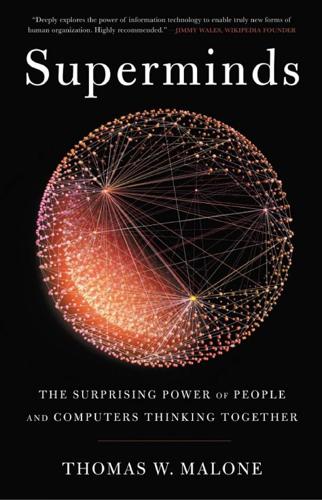
Superminds: The Surprising Power of People and Computers Thinking Together
by
Thomas W. Malone
Published 14 May 2018
And finally, the insight that collective intelligence isn’t just a property of a group but also a kind of group that has this property was crystallized for me in a conversation with Benjamin Kuipers in 2011. I asked Ben to write about that idea so I could cite him. He did, I did (in chapters 1 and 10), and eventually I realized that a good name for these groups would be… superminds. I would also like to thank computer industry analyst and investor Esther Dyson and science fiction writer Vernor Vinge for a remarkable dinner in 2005. In a sense, they are responsible for this book because, by the end of that dinner, I had the feeling not that I had decided what my next main research topic would be, but that I had finally admitted to myself something I had already known unconsciously: that my next research topic would be what I now call “superminds.”
…
—James Manyika, chairman of the McKinsey Global Institute “Humans plus computers and networks have enormous potential. How can such wee creatures as ourselves take advantage of this potential? In his new book, Malone addresses this question in a concrete way, laying the foundation for a new discipline: the systems engineering of superminds.” —Vernor Vinge, Hugo Award–winning science fiction author and originator of the “technological singularity” concept “Malone takes us on an intentional journey into thinking about thought, intelligence, reasoning, and consciousness. He sees these notions in extremely broad terms that have changed my views of what it means to ‘think’—a property that emerges from aggregations and organized structures.
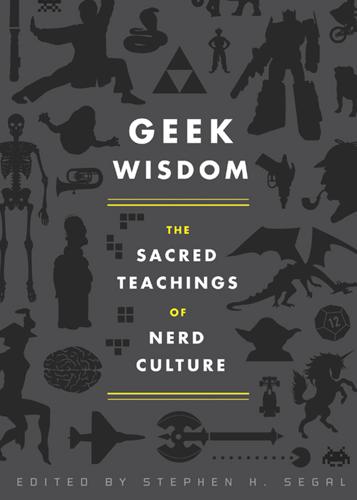
Geek Wisdom
by
Stephen H. Segal
Published 2 Aug 2011
—CYLON HYBRID, BATTLESTAR GALACTICA; ALSO, MASTER CONTROL PROGRAM, TRON “RESISTANCE IS FUTILE.” —THE BORG, STAR TREK: THE NEXT GENERATION “UPGRADING IS COMPULSORY.” —THE CYBERMEN, DOCTOR WHO THERE’S SOMETHING EXISTENTIAL about modern culture’s fear of “the Singularity,” author Vernor Vinge’s name for the moment when technology will have advanced so far that it transforms humanity, or perhaps transcends it, in a way we cannot yet anticipate. That hasn’t stopped us from envisioning that posthuman future in stories, and usually we figure it’ll be pretty terrible for those of us still confined to meat-sack bodies when the time comes.
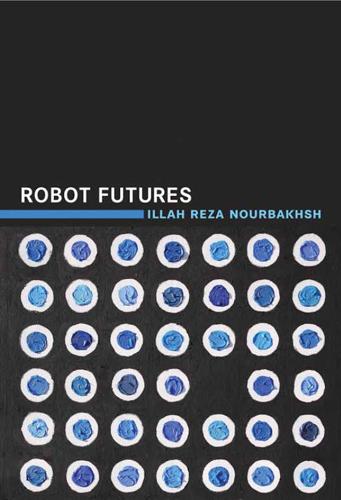
Robot Futures
by
Illah Reza Nourbakhsh
Published 1 Mar 2013
Robot Never attempt to extract a definition for this word from a roboticist. Nearly all robotics researchers disagree completely regarding its meaning, and their definitions change rapidly with the onset of new innovations. Singularity This trend or event is hypothesized by futurists such as Raymond Kurzweil and Vernor Vinge as the oncoming rapid acceleration of AI capability to the point that it becomes self-reinforcing, with a runaway quality in which super-beings are rapidly created by a highly intelligent AI with or without the participation of humans (who may be plugged into the intelligence if we and AI systems hypothetically merge into a new race).

Surviving AI: The Promise and Peril of Artificial Intelligence
by
Calum Chace
Published 28 Jul 2015
In the last year, awareness that advanced AI brings both immense promise and immense peril has become widespread. I’m sure that both Kurzweil and Bostrom would freely admit that, like Newton, they saw further than others because they stood on the shoulders of giants – in their cases people like Hans Moravic, Vernor Vinge and Alvin Toffler. There seems little point trying to pin down the exact source of each and every innovative idea our species has had: we can just be grateful that we do have them. Those of us who have been thinking about these things for years have long felt there needed to be a global debate about the future of artificial intelligence.

Machines of Loving Grace: The Quest for Common Ground Between Humans and Robots
by
John Markoff
Published 24 Aug 2015
The quickening pace of AI innovation has led some, such as Rice University computer scientist Moshe Vardi, to proclaim the imminent end of a very significant fraction of all tasks performed by humans, perhaps as soon as 2045.2 Even more radical voices argue that computers are evolving at such a rapid pace that they will outstrip the intellectual capabilities of humans in one, or at the most two more generations. The science-fiction author and computer scientist Vernor Vinge posed the notion of a computing “singularity” in which machine intelligence will make such rapid progress that it will cross a threshold and then in some as yet unspecified leap, become superhuman. It is a provocative claim, but far too early to answer definitively. Indeed, it is worthwhile recalling the point made by longtime Silicon Valley observer Paul Saffo when thinking about the compounding impact of computing.
…
The year 2045 is when Ray Kurzweil predicts humans will transcend biology, and implicitly, one would presume, destiny.37 Kurzweil, the serial artificial intelligence entrepreneur and author who joined Google as a director of engineering in 2012 to develop some of his ideas for building an artificial “mind,” represents a community of many of Silicon Valley’s best and brightest technologists. They have been inspired by the ideas of computer scientist and science-fiction author Vernor Vinge about the inevitability of a “technological singularity” that would mark the point in time at which machine intelligence will surpass human intelligence. When he first wrote about the idea of the singularity in 1993, Vinge framed a relatively wide span of years—between 2005 and 2030—during which computers might become “awake” and superhuman.38 The singularity movement depends on the inevitability of mutually reinforcing exponential improvements in a variety of information-based technologies ranging from processing power to storage.
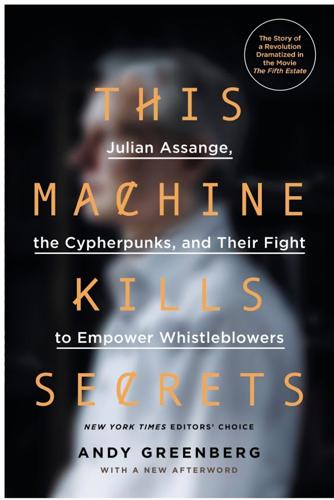
This Machine Kills Secrets: Julian Assange, the Cypherpunks, and Their Fight to Empower Whistleblowers
by
Andy Greenberg
Published 12 Sep 2012
He read Orson Scott Card’s Ender’s Game, with its pseudonymous characters, Demosthenes and Locke, who are actually genius elementary school–age children influencing global politics on the Internet with their untraceable ideas. He read James Bamford’s The Puzzle Palace, a history of the National Security Agency and its shadowy work, and Vernor Vinge’s True Names, a novella about a cyberspace where hackers are elevated to gods and their only weakness is the identity that ties them to their frail bodies. Soon May discovered the Usenet, the Internet’s nascent bulletin board system. He would wait until night to switch on his 1200 baud modem and log on, the better to save money on bandwidth and avoid the traffic jams that plagued the early information networks.
…
one rebel group allows anyone to anonymously spill their secrets over the phone lines Jon Brunner. The Shockwave Rider (Ballantine Books, 1976). a history of the National Security Agency and its shadowy work James Bamford. The Puzzle Palace (New York: Penguin Books, 1983). only weakness is the identity that ties them to their frail bodies Vernor Vinge. “True Names.” In True Names and the Opening of the Cyberspace Frontier (New York: Tor, 2001), first published in Dell Binary Star #5, 1981. M. T. Graves and the Dungeon Steven Levy. Crypto (New York: Penguin Books, 2001), p. 187. Herbert Zim’s Codes & Secret Writing Ibid. produce a solution in minutes Levy, p. 188.
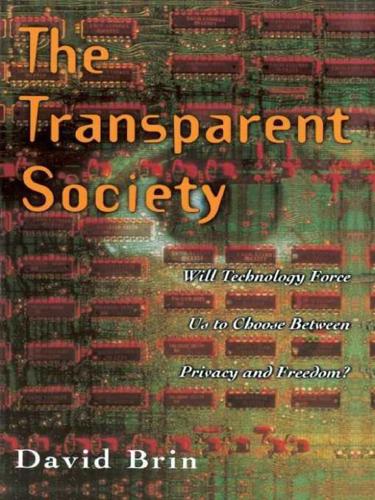
The Transparent Society: Will Technology Force Us to Choose Between Privacy and Freedom?
by
David Brin
Published 1 Jan 1998
Others proclaim the Internet a modern oracle, enabling simple folk to query libraries, databases, political organizations, or even corporate and university researchers, at last breaking the monopoly of “experts” and empowering multitudes with the same information used by the decisionmaking class. (See “A Century of Aficionados” later in this chapter.) Projecting this transcendent imagery forward in time, science fiction author Vernor Vinge foresees computerized media leading to a culturaltechnical “singularity.” When each person can share all stored knowledge, and exchange new ideas instantly, every field may advance at exponential rates, leading to a kind of human deification, a concept elaborated by UCLA researcher Gregory Stock in Metaman: The Merging of Humans and Machines into a Global Superorganism.
…
More domains are planned, as the initial niches are filled at a rate many times faster than the originators ever envisioned. The most interesting thing about this system is how little bureaucracy is involved. A small commercial service is allowed to franchise out domain names for a small fee on a first-come, first-served basis. 39 ... author Vernor Vinge ... For more on the “singularity” see Vingeʼs novel, Across Real Time (New York: Baen Books, 1986). 42 ... a long, hard road getting here ... I have long been amazed that some people seem driven to claim that our varied ancestors (whether European, African, Native American, etc.) were in many or all ways better, wiser, smarter, and more honorable than we are, as if this somehow honors their memory!

The Stack: On Software and Sovereignty
by
Benjamin H. Bratton
Published 19 Feb 2016
See Keller Easterling, “An Internet of Things,” e-flux, no. 31 (January 2012), http://worker01.e-flux.com/pdf/article_8946204.pdf, and Molly Wright Steenson, “Architectures of Information: Christopher Alexander, Cedric Price, and Nicholas Negroponte & MIT's Architecture Machine Group” (PhD dissertation, Princeton University School of Architecture, 2014). Richard Saul Wurman is widely credited with the first use of the term information architecture, and for this we may be glad. He was also the founder of TED, and for this we may be sad. 15. Vernor Vinge, “Vernor Vinge at the Center for Design and Geopolitics” (lecture at the Center for Design and Geopolitics University of California, San Diego, June 3, 2011). 16. The thing as “gathering” is in reference to Martin Heidegger's use in his 1950 essay “Das Ding,” and Bruno Latour's employment and furtherance of this image in his “parliament of things.”
…
Before MIT's Media Lab, Nicholas Negroponte founded Architecture Machine Group, which focused on the problems of human-computer interaction at the environmental scale and what came in time to be called “information architecture.”14 Today, as suggested, many speculative information space design questions are not only coordinated around building automation but also for the conjuring of exotic materials such as smart dust, a generic name for different kinds of millimeter- to nanometer-scale sensor arrays with ultralow power budgets connected wirelessly and which gather hyperlocal data as they swerve. Some of these perhaps even also in turn react back on their microcosmos and our macrocosmos—what Vernor Vinge calls “smart motes with effectors.”15 Other programs focus on the design of the spatial, temporal, and semantic relations between physical and data objects. Bruce Sterling's influential Shaping Things introduced the term SPIME to designate the hybrid profile of an object, as accumulated all the way from its virtual design, to sourcing, to assembly, through its use and consumption, and its ultimate disassembly back into entropic matter.

50 Future Ideas You Really Need to Know
by
Richard Watson
Published 5 Nov 2013
Possibly because we up our expectations of what we expect ourselves or others to do or produce. There’s also the thought that rising automation will lead to mass unemployment and a Luddite revolution. “I have argued that we cannot prevent the Singularity, that its coming is an inevitable consequence of the humans” natural competitiveness and the possibilities inherent in technology.’ Vernor Vinge, computer scientist, professor of mathematics and sci-fi author It’s cheaper to build robots than it is to pay someone over a lifetime. Robots don’t need to sleep or take holidays either. But the value of human work could still rise, especially if some of us prefer to be served by human beings and are willing to pay extra for it.
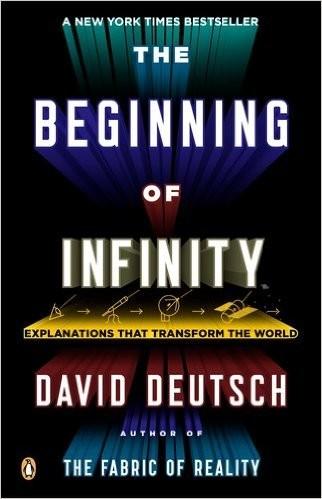
The Beginning of Infinity: Explanations That Transform the World
by
David Deutsch
Published 30 Jun 2011
That being so, if our species will nevertheless have a finite lifetime, then knowing the total number of humans who will ever live provides no upper bound on that lifetime, because it cannot tell us how long the potentially immortal humans of the future will live before the prophesied catastrophe strikes. In 1993 the mathematician Vernor Vinge wrote an influential essay entitled ‘The Coming Technological Singularity’, in which he estimated that, within about thirty years, predicting the future of technology would become impossible – an event that is now known simply as ‘the Singularity’. Vinge associated the approaching Singularity with the achievement of AI, and subsequent discussions have centred on that.
…
: Everett, Quantum Theory, and Reality (Oxford University Press, 2010) David Deutsch, ‘It from Qubit’, in John Barrow, Paul Davies and Charles Harper, eds., Science and Ultimate Reality (Cambridge University Press, 2003) David Deutsch, ‘Quantum Theory of Probability and Decisions’, Proceedings of the Royal Society A455 (1999) David Deutsch, ‘The Structure of the Multiverse’, Proceedings of the Royal Society A458 (2002) Richard Feynman, The Character of Physical Law (BBC Publications, 1965) Richard Feynman, The Meaning of It All (Allen Lane, 1998) Ernest Gellner, Words and Things (Routledge & Kegan Paul, 1979) William Godwin, Enquiry Concerning Political Justice (1793) Douglas Hofstadter, Gödel, Escher, Bach: An Eternal Golden Braid (Basic Books, 1979) Douglas Hofstadter, I am a Strange Loop (Basic Books, 2007) Bryan Magee, Popper (Fontana, 1973) Pericles, ‘Funeral Oration’ Plato, Euthyphro Karl Popper, In Search of a Better World (Routledge, 1995) Karl Popper, The World of Parmenides (Routledge, 1998) Roy Porter, Enlightenment: Britain and the Creation of the Modern World (Allen Lane, 2000) Martin Rees, Just Six Numbers (Basic Books, 2001) Alan Turing, ‘Computing Machinery and Intelligence’, Mind, 59, 236 (October 1950) Jenny Uglow, The Lunar Men (Faber, 2002) Vernor Vinge, ‘The Coming Technological Singularity’, Whole Earth Review, winter 1993 *The term was coined by the philosopher Norwood Russell Hanson. *This terminology differs slightly from that of Dawkins. Anything that is copied, for whatever reason, he calls a replicator. What I call a replicator he calls an ‘active replicator’.
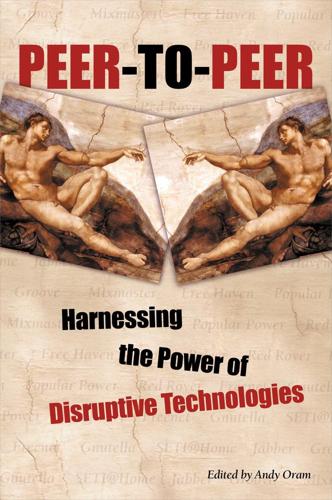
Peer-to-Peer
by
Andy Oram
Published 26 Feb 2001
Reputation can be a complex matter—just think of all the reader reviews and “People also bought...” ratings on the Amazon.com retail site—so we’ll leave its discussion to Chapter 16, and Chapter 17. Establishing trust through the use of pseudonyms is covered in Chapter 15. What lets a malicious adversary find a person in real life? One way is to know his or her true name , a term first used in a short story by fiction author Vernor Vinge[11] and popularized by Tim May.[12] The true name is the legal identity of an individual and can be used to find an address or other real-life connection. Obviously, a pseudonym should not be traceable to a true name. As an author can use a pseudonym to protect his or her true name, in a computerized storage system a user can employ a pseudonym to protect another form of identity called location .
…
Andy Oram, our editor, was instrumental in turning this from an academic paper into something that is actually readable. Adam Back and Theodore Hong commented on our assessment of their systems and made our related work section much better. Furthermore, we thank Susan Born, Nathan Mahn, Jean-François Raymond, Anna Lysyanskaya, Adam Smith, and Brett Woolsridge for further insight and feedback. * * * [11] Vernor Vinge (1987), True Names... and Other Dangers, Baen. [12] Tim May, Cyphernomicon, http://www-swiss.ai.mit.edu/6805/articles/crypto/cypherpunks/cyphernomicon. [13] David Mazieres and M. Frans Kaashoek (1998), “The Design and Operation of an E-mail Pseudonym Server,” 5th ACM Conference on Computer and Communications Security
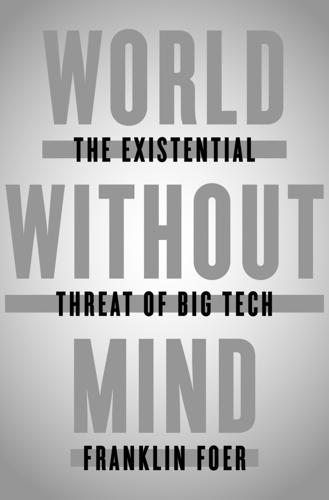
World Without Mind: The Existential Threat of Big Tech
by
Franklin Foer
Published 31 Aug 2017
His main business is prophecy. Kurzweil believes fervently in AI, which he studied at MIT with its earliest pioneers, and yearns for the heaven on earth it will create. This paradise has a name—it’s called the singularity. Kurzweil borrowed the term from the mathematician-cum-science-fiction-writer Vernor Vinge, who, in turn, filched it from astrophysics. The singularity refers to a rupture in the time-space continuum—it describes the moment when the finite become infinite. In Kurzweil’s telling, the singularity is when artificial intelligence becomes all-powerful, when computers are capable of designing and building other computers.
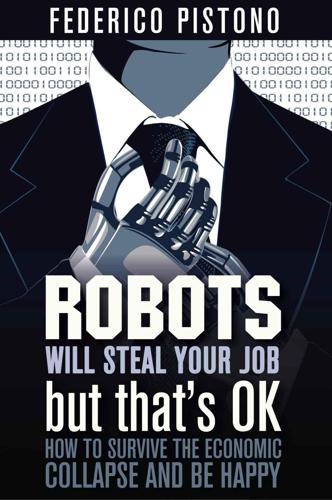
Robots Will Steal Your Job, But That's OK: How to Survive the Economic Collapse and Be Happy
by
Pistono, Federico
Published 14 Oct 2012
I had many discussions regarding the issue of technological unemployment, particularly during my Graduate Study Program at Singularity University, NASA Ames Research Center, where I had the opportunity to speak with some of the greatest minds on the field, including the authors of the book “Race Against the Machine” Erik Brynjolfsson and Andrew McAfee, founding executive editor of Wired magazine Kevin Kelly, inventor and futurist Ray Kurzweil, and science fiction writer Vernor Vinge. I stand by my thesis, that the economy will not abide in creating new jobs at the same pace with which technology destroys them. Many disagree with me, and we could have a discussion about that, but I think this is missing the point. I can envision a plethora of futures where everyone has a job.

You Are Not a Gadget
by
Jaron Lanier
Published 12 Jan 2010
It applies metaphors from certain strains of computer science to people and the rest of reality. Pragmatic objections to this philosophy are presented. What Do You Do When the Techies Are Crazier Than the Luddites? The Singularity is an apocalyptic idea originally proposed by John von Neumann, one of the inventors of digital computation, and elucidated by figures such as Vernor Vinge and Ray Kurzweil. There are many versions of the fantasy of the Singularity. Here’s the one Marvin Minsky used to tell over the dinner table in the early 1980s: One day soon, maybe twenty or thirty years into the twenty-first century, computers and robots will be able to construct copies of themselves, and these copies will be a little better than the originals because of intelligent software.
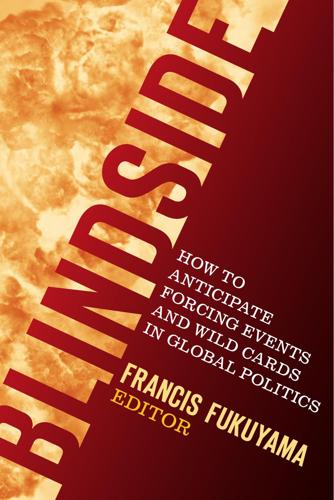
Blindside: How to Anticipate Forcing Events and Wild Cards in Global Politics
by
Francis Fukuyama
Published 27 Aug 2007
The worst thing that could have happened to New York City on September 11, 1901, would have been that the British fleet, the most powerful in the world, could have sailed in and started shelling the town, as it had done, by the way, some years earlier. And that might have done less damage in dollar terms and would probably have killed fewer people than what happened on September 11, 2001. Now ask yourself what would be the worst thing that could happen on September 11, 2101. Vernor Vinge, the science fiction writer, talks about how at some point in this century a person will be able to go to a Radio Shack to buy the parts to build a bomb that can blow up California. The obvious point is that the tremendous rate of technological progress will vastly expand the opportunities for the human race to do bad things as well as good.
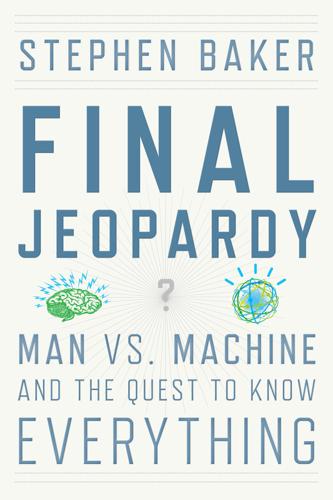
Final Jeopardy: Man vs. Machine and the Quest to Know Everything
by
Stephen Baker
Published 17 Feb 2011
They weren’t looking for advances in technology that already existed. Instead, they were focused on a bolder challenge, the development of deep and broad machine intelligence known as Artificial General Intelligence. This, they believed, would lead to the next step of human evolution. The heart of the Singularity argument, as explained by the technologists Vernor Vinge and Ray Kurzweil, the leading evangelists of the concept, lies in the power of exponential growth. As Samuel Butler noted, machines evolve far faster than humans. But information technology, which Butler only glimpsed, races ahead at an even faster rate. Digital tools double in power or capacity every year or two, whether they are storing data, transmitting it, or performing calculations.

The Economic Singularity: Artificial Intelligence and the Death of Capitalism
by
Calum Chace
Published 17 Jul 2016
In his 1962 book “The Production and Distribution of Knowledge in the United States”, the Austrian economist Fritz Machler suggested that with 29% of GDP accounted for by the knowledge industry, it had begun. [iv] The term was first applied to human affairs back in the 1950s by John von Neumann, a key figure in the development of the computer. The physicist and science fiction author Vernor Vinge argued in 1993 that artificial intelligence and other technologies would cause a singularity in human affairs within 30 years. This idea was picked up and popularised by the inventor and futurist Ray Kurzweil, who believes that computers will overtake humans in general intelligence in 1929, and a singularity will arrive in 2045. https://en.wikipedia.org/wiki/Technological_singularity [v] The event horizon of a black hole is the point beyond which events cannot affect an outside observer, or in other words, the point of no return.

Prediction Machines: The Simple Economics of Artificial Intelligence
by
Ajay Agrawal
,
Joshua Gans
and
Avi Goldfarb
Published 16 Apr 2018
They fear that a “superintelligence”—to use the term coined by Oxford philosopher Nick Bostrom—will emerge that pretty quickly sees humanity as a threat, an irritant, or something to enslave.26 In other words, AI could be our last technological innovation.27 We are not in a position here to adjudicate this issue and cannot even agree among ourselves. But what has struck us is how close to economics the debate actually is: competition underpins it all. A superintelligence is an AI that can outperform humans in most cognitive tasks and can reason through problems. Specifically, it can invent and improve itself. While science fiction author Vernor Vinge called the point at which this emerges “the Singularity” and futurist Ray Kurzweil suggested humans are not equipped to foresee what will happen at this point because we are by definition not as intelligent, it turns out that economists are actually quite well equipped to think about it. For years, economists have faced criticism that the agents on which we base our theories are hyper-rational and unrealistic models of human behavior.

To Be a Machine: Adventures Among Cyborgs, Utopians, Hackers, and the Futurists Solving the Modest Problem of Death
by
Mark O'Connell
Published 28 Feb 2017
In his 1958 obituary for the physicist John von Neumann, with whom he had worked on the Manhattan Project, Stanislaw Ulam wrote about a conversation they once had about “the ever accelerating progress of technology and changes in the mode of human life, which gives the appearance of approaching some essential singularity in the history of the race beyond which human affairs, as we know them, could not continue.” The first substantial statement of the concept of a Technological Singularity is usually attributed to the mathematician and science fiction writer Vernor Vinge. In an essay called “The Coming Technological Singularity: How to Survive in the Post-human Era,” first delivered as a paper at a 1993 conference organized by NASA, Vinge claimed that “within thirty years, we will have the technological means to create superhuman intelligence. Shortly thereafter, the human era will be ended.”

The Innovators: How a Group of Inventors, Hackers, Geniuses and Geeks Created the Digital Revolution
by
Walter Isaacson
Published 6 Oct 2014
“We are continually looking at the list of things machines cannot do—play chess, drive a car, translate language—and then checking them off the list when machines become capable of these things,” said Tim Berners-Lee. “Someday we will get to the end of the list.”18 These latest advances may even lead to the singularity, a term that von Neumann coined and the futurist Ray Kurzweil and the science fiction writer Vernor Vinge popularized, which is sometimes used to describe the moment when computers are not only smarter than humans but also can design themselves to be even supersmarter, and will thus no longer need us mortals. Vinge says this will occur by 2030.19 On the other hand, these latest stories might turn out to be like the similarly phrased ones from the 1950s, glimpses of a receding mirage.
…
Beau Cronin of O’Reilly Media has proposed a drinking game: “take a shot every time you find a news article or blog post that describes a new AI system as working or thinking ‘like the brain’ ” (http://radar.oreilly.com/2014/05/it-works-like-the-brain-so.html), and he maintains a pinboard of stories making such claims (https://pinboard.in/u:beaucronin/t:like-the-brain/#). 18. Author’s interview with Tim Berners-Lee. 19. Vernor Vinge, “The Coming Technological Singularity,” Whole Earth Review, Winter 1993. See also Ray Kurzweil, “Accelerating Intelligence,” http://www.kurzweilai.net/. 20. J. C. R. Licklider, “Man-Computer Symbiosis,” IRE Transactions on Human Factors in Electronics, Mar. 1960. 21. Kelly and Hamm, Smart Machines, 7. 22.
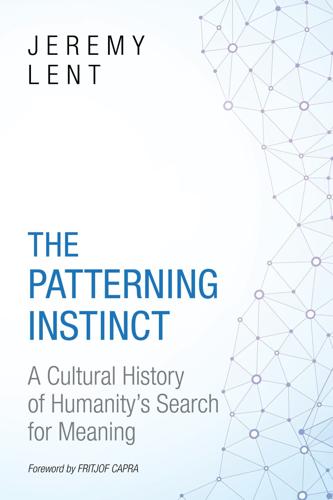
The Patterning Instinct: A Cultural History of Humanity's Search for Meaning
by
Jeremy Lent
Published 22 May 2017
Andrews, and Rosario Isasi, “Protecting the Endangered Human: Toward an International Treaty Prohibiting Cloning and Inheritable Alterations,” American Journal of Law and Medicine 28 (2002): 151–78. 44. Nick Bostrom, “Transhumanist Values,” Review of Contemporary Philosophy 4, nos. 1–2 (2005): 87–101. 45. Bostrom, “Transhumanist Values”; Vernor Vinge, “What Is the Singularity?” (presentation, Vision 21 Symposium, Westlake, OH, March 30, 1993). 46. Ray Kurzweil, The Singularity Is Near (New York: Penguin Books, 2005); Singularity University, http://singularityu.org (accessed February 5, 2017); Wikipedia, s.v. “Ray Kurzweil,” http://en.wikipedia.org/wiki/Ray_Kurzweil (accessed September 2, 2016). 47.
…
“Machine-to-Machine Communications: Connecting Billions of Devices,” OECD Digital Economy Papers, no. 192 (2012). 48. Igor Aleksander, “The Self ‘Out There,’” Nature 413 (2001): 23; Michael Chorost, World Wide Mind: The Coming Integration of Humanity, Machines, and the Internet (New York: Free Press, 2011), iBook edition, chap. 11. 49. Moravec, Robot, 66–69; McKibben, Enough, 78. 50. Vernor Vinge, “What Is the Singularity?”; Margulis and Sagan, Microcosmos, 260. 51. Kurzweil, Singularity, 9, 136. 52. Ibid., 29–30. 53. See “The Deification of Reason” in chapter 7 and “Cogito Ergo Sum” in chapter 12. 54. Kurzweil, Singularity, 32, 311. See “The Conflict of Body and Soul” in chapter 7. 55.

Live Work Work Work Die: A Journey Into the Savage Heart of Silicon Valley
by
Corey Pein
Published 23 Apr 2018
If, as Ellul has it, technology is the state religion, Singularitarianism must be seen as its most extreme and fanatical sect. It is the Opus Dei of the postwar church of gadget worship. Ray Kurzweil may be the best-known prophet of this order, but he was not the first. The true father of Singularitarianism is a sci-fi author and retired mathematics professor from Wisconsin named Vernor Vinge. His earliest written exposition of the idea appeared in the January 1983 issue of Omni, an oddball “science” magazine founded by Kathy Keeton, once among the “highest-paid strippers in Europe,” according to her New York Times obituary, but better known for promoting quack cancer cures and for cofounding Penthouse with her husband, Bob Guccione.
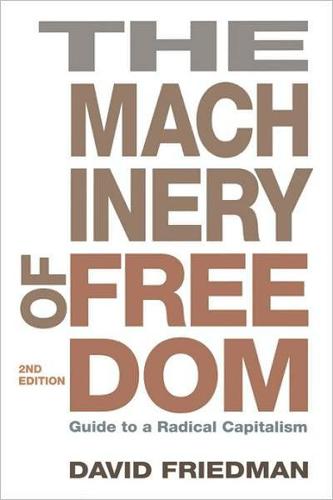
Machinery of Freedom: A Guide to Radical Capitalism
by
David Friedman
Published 2 Jan 1978
The first describes a libertarian revolt in the near future, the second a society with a male-to-female ratio of ten to one where women are drafted into a prostitution corps. L. Neil Smith, The Probability Broach (New York: Ballantine, 1980), The Venus Belt (New York: Ballantine, 1980) and lots more that I have not yet read. His books are sometimes fun; my main reservation is that the good guys are too obviously in the right and win too easily. Vernor Vinge, True Names (New York: Bluejay, 1984), The Peace War (New York: Bluejay, 1984; Ultramarine, 1984), Marooned in Realtime (New York: Bluejay, 1986; Baen, 1987). These are science fiction novels by a libertarian with interesting ideas. The historical background for the last of the three, which is set in the very far future, includes an anarcho-capitalist society along the general lines described in Part III of this book.

The Second Machine Age: Work, Progress, and Prosperity in a Time of Brilliant Technologies
by
Erik Brynjolfsson
and
Andrew McAfee
Published 20 Jan 2014
Self-preservation alone would plausibly motivate this digital army to fight against us (perhaps using Siri as an interpreter for the enemy). In utopian versions of digital consciousness, we humans don’t fight with machines; we join with them, uploading our brains into the cloud and otherwise becoming part of a “technological singularity.” This is a term coined in 1983 by science-fiction author Vernor Vinge, who predicted that, “We will soon create intelligences greater than our own. . . . When this happens, human history will have reached a kind of singularity, an intellectual transition as impenetrable as the knotted space-time at the center of a black hole, and the world will pass far beyond our understanding.”6 Progress toward such a singularity, Vinge and others have argued, is driven by Moore’s Law.

What Algorithms Want: Imagination in the Age of Computing
by
Ed Finn
Published 10 Mar 2017
We know it as the apotheosis of the algorithm, when technological change will accelerate to such speed that human intelligence may simply be eclipsed. In this scenario we no longer manipulate the symbols and we can no longer construe their meaning. It is the endgame of computationalism as considered by philosopher Nick Bostrom, computer scientist Vernor Vinge, and others, an existential referendum on the relationship between humanity and technics.73 If we follow the asymptote of the effective procedure far enough, the space of computation advances with not just a vanguard but a rearguard, and humanity might simply be left behind—no longer effective or efficient enough to merit emulation or attention.

Life After Google: The Fall of Big Data and the Rise of the Blockchain Economy
by
George Gilder
Published 16 Jul 2018
Also there was Facebook’s Yann LeCun, an innovator in deep-learning math and a protégé of Google’s Geoffrey Hinton. A tenured contingent consisted of the technologist Stuart Russell, the philosopher David Chalmers, the catastrophe theorist Nick Bostrom, the nanotech prophet Eric Drexler, the cosmologist Lawrence Krauss, the economist Erik Brynjolfsson, and the “Singularitarian” Vernor Vinge, along with scores of other celebrity scientists.1 They gathered at Asilomar preparing to alert the world to the dire threat posed by . . . well, by themselves—Silicon Valley. Their computer technology, advanced AI, and machine learning—acclaimed in hundreds of press releases as the Valley’s principal activity and hope for the future, with names such as TensorFlow, DeepMind, Machine Learning, Google Brain, and the Singularity—had gained such power and momentum that it was now deemed nothing less than a menace to mankind.
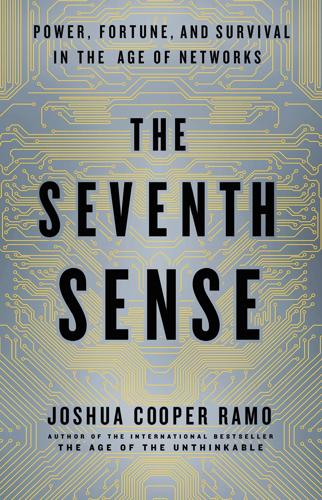
The Seventh Sense: Power, Fortune, and Survival in the Age of Networks
by
Joshua Cooper Ramo
Published 16 May 2016
The introduction features a poem, pecked out in IBM typewriter lettering, titled “Into the Era of Cyberspace,” written with all the pocket-protector fluidity one might expect of a NASA engineer: “Our robots precede us / with infinite diversity / exploring the universe / delighting in complexity.” (Turing’s rhyming computer, you have to suspect, could have done better.) One of the first speakers at the conference was a San Diego State University professor named Vernor Vinge, whose remarks that day marked the start of an important era in our consideration of smart machines. His talk was called “The Coming Technological Singularity: How to Survive in the Post-human Era.” “Within thirty years,” Vinge began, “we will have the technological means to create superhuman intelligence.

Artificial Intelligence: A Guide for Thinking Humans
by
Melanie Mitchell
Published 14 Oct 2019
Since the design of machines is one of these intellectual activities, an ultraintelligent machine could design even better machines; there would then unquestionably be an ‘intelligence explosion,’ and the intelligence of man would be left far behind.”21 Kurzweil was also influenced by the mathematician and science fiction writer Vernor Vinge, who believed this event was close at hand: “The evolution of human intelligence took millions of years. We will devise an equivalent advance in a fraction of that time. We will soon create intelligences greater than our own. When this happens, human history will have reached a kind of singularity … and the world will pass far beyond our understanding.”22 Kurzweil takes the intelligence explosion as his starting point and then turns up the sci-fi intensity, moving from AI to nanoscience, then to virtual reality and “brain uploading,” all in the same calm, confident tone of a Delphic oracle looking at a calendar and pointing to specific dates.

A New History of the Future in 100 Objects: A Fiction
by
Adrian Hon
Published 5 Oct 2020
There are few explorations of history that surpass it in imagination and vividness, and as soon as I finished listening to the hundredth episode, I immediately began thinking of what the next hundred objects might be. More broadly, I owe a debt of gratitude to the writers who have inspired me: Vernor Vinge, Iain Banks, Neal Stephenson, Kim Stanley Robinson, Lewis Hyde, Ted Chiang, George Orwell, Stanislaw Lem, and many more. Without their stories and ideas, the future would be a darker place. Thanks to my editor at MIT Press, Susan Buckley, for her invaluable advice, and the editors of the first edition, Richard Dennis and Andrea Phillips.
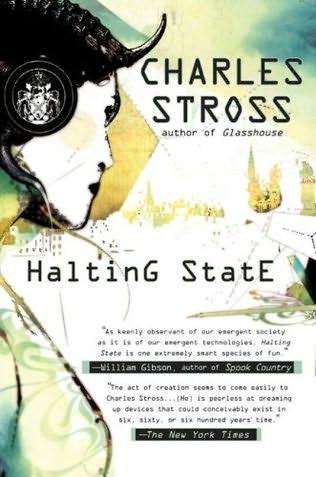
Halting State
by
Charles Stross
Published 9 Jul 2011
CONTENTS ACKNOWLEDGMENTS PROLOGUE: We Know Where You Live, We Know Where Your Dog Goes to School SUE: Grand Theft Automatic ELAINE: Stitch-up JACK: Steaming INTERLUDE: CIA World Factbook, 2017 SUE: Earning Overtime ELAINE: Death or Coffee JACK: Revenge of the Mummy Lobe SUE: Wayne’s World ELAINE: A Catastrophic Loss of Goodwill JACK: mouthinsert(foot); SUE: Gaining Access ELAINE: Being Constructive JACK: In Hell SUE: Victim Liaison ELAINE: Stitched Up JACK: Designs on Your Dungeon SUE: Chop Shop ELAINE: Game of Spooks JACK: Meat Machine SUE: Heavy Mob ELAINE: Alone in the Dome JACK: This Is Not a Game SUE: Pigs in a China Shop ELAINE: System Fails, People Die JACK: The Anti-nutcase EULA SUE: Cover-up ELAINE: Shanghaied JACK: Sex Offender SUE: Missing in Action ELAINE: Morning After JACK: Body of Evidence SUE: Civil Contingencies ELAINE: Gentleman and Players JACK: Schrödinger’s Girl SUE: Making Plans for Nigel ELAINE: Zombie Mush JACK: In the Box SUE: Plea Bargain EPILOGUE: Banker Martin Mase ACKNOWLEDGMENTS Books do not get written in majestic isolation, and this one is no exception. Certainly it wouldn’t exist in its current form without valuable feedback from a host of readers. I’d particularly like to single out for thanks Vernor Vinge, Hugh Hancock, Greg Costikyan, Ron Avitzur, Eric Raymond, Tony Quirke, Robert Sneddon, Paul Friday, Dave Bush, Alexander Chane Austin, Larry Colen, Harry Payne, Trey Palmer, Dave Clements, Andrew Veitch, Hannu Rajaniemi, Soon Lee, and Jarrod Russell. I’d also like to thank my other test readers, too numerous to name today.

Is the Internet Changing the Way You Think?: The Net's Impact on Our Minds and Future
by
John Brockman
Published 18 Jan 2011
Ideologically, this was a torch carried by Wired magazine, and the ideal probably reached its zenith in John Perry Barlow’s 1996 essay, “A Declaration of the Independence of Cyberspace.” Silly me. I should have known better. It would all be spelled out clearly in John Brunner’s The Shockwave Rider, William Gibson’s Neuromancer, Neal Stephenson’s Snowcrash, Vernor Vinge’s True Names, and even less-well-read classics such as John Barnes’s The Mother of Storms. Science fiction writers were always the best social scientists, and in describing the dystopian nature of the Net they were again right on target. There would be nothing even vaguely utopian about the reality of the Internet, despite preachy “The Road Ahead” vision statements by (late to the Web) luminaries like Bill Gates.

The Industries of the Future
by
Alec Ross
Published 2 Feb 2016
Moore’s law applies to the transistors and technology that control robots as well as those in computers. Add rapid advances in machine learning, data analytics, and cloud robotics, and it’s clear that computing is going to keep rapidly improving. Those who argue for the singularity differ on when it will occur. Mathematician Vernor Vinge predicts that it will occur by 2023; futurist Ray Kurzweil says 2045. But the question looming over singularity is whether there’s a limit on how far our technology can ultimately go. Those who argue against the possibility of singularity point to several factors. The software advances necessary to reach singularity demand a detailed scientific understanding of the human brain, but our lack of understanding about the basic neural structure of the brain impedes software development.
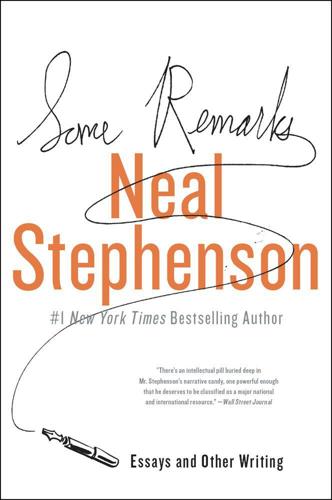
Some Remarks
by
Neal Stephenson
Published 6 Aug 2012
It has happened many times in history that new systems will come along and, instead of obliterating the old, will surround and encapsulate them and work in symbiosis with them but otherwise pretty much leave them alone (think mitochondria) and sometimes I get the feeling that something similar is happening with these two literary worlds. The fact that we are having a discussion like this one on a forum such as Slashdot is Exhibit A. SINGULARITY—BY RANDALX What are your thoughts on Vernor Vinge’s Singularity prediction. Is it inevitable? Will humans become a part of it or be left behind by this new “species”? NEAL: I can never get past the structural similarities between the Singularity prediction and the apocalypse of St. John the Divine. This is not the place to parse it out, but the key thing they have in common is the idea of a rapture, in which some chosen humans will be taken up and made one with the infinite while others will be left behind.

The AI Economy: Work, Wealth and Welfare in the Robot Age
by
Roger Bootle
Published 4 Sep 2019
Whether and when it will ever be there, in the outside world, and with what consequences, is what we must now consider. The first use of the term “singularity” to refer to a future technology driven event seems to have been by the legendary computer pioneer John von Neumann, in the 1950s. But it doesn’t seem to have caught on until, in 1983, the mathematician Vernor Vinge wrote about an approaching “technological singularity.”3 More recently, the “Singularity,” notably now sporting a capital “S,” has become closely associated with the name of Ray Kurzweil, who published his book The Singularity is Near: When Humans Transcend Biology in 2005. He is currently Google’s Director of Engineering.

Boom: Bubbles and the End of Stagnation
by
Byrne Hobart
and
Tobias Huber
Published 29 Oct 2024
Sinsheimer, The Strands of Life (Berkeley, University of California Press, 1994), 287. 385 Noble, The Religion of Technology, 195. 386 When asked whether he believes that God exists, the preeminent transhumanist Ray Kurzweil replied, “Not yet,” implying that the development of artificial general intelligence represents the active building toward a god. John Rennie, “The Immortal Ambitions of Ray Kurzweil: A Review of Transcendent Man,” Scientific American, February 15, 2011, https://www.scientificamerican.com/article/the-immortal-ambitions-of-ray-kurzweil/. 387 Vernor Vinge, “The Coming Technological Singularity: How to Survive in the Post-Human Era,” VISION-21 Symposium, March 30–31, 1993, https://edoras.sdsu.edu/~vinge/misc/singularity.html; Kurzweil, The Age of Spiritual Machines; Kurzweil, The Singularity Is Near. 388 Echoing John’s apocalyptic vision in Revelation 21:4 of a New Jerusalem descending from Heaven in which “there will be no more death or sorrow or crying or pain,” the singularity, according to its believers, will “wipe away all tears from their eyes; and there shall be no more death.”

In Our Own Image: Savior or Destroyer? The History and Future of Artificial Intelligence
by
George Zarkadakis
Published 7 Mar 2016
They are not the only ones worried about AI taking over the world. Ray Kurzweil – inventor, entrepreneur and currently the head of AI research for Google – thinks that this will happen by 2030. But how did all this talk about the AI Singularity start? The answer, not surprisingly perhaps, is to be found not in science but in science fiction. Vernor Vinge is a computer scientist, science fiction writer and winner of the prestigious Hugo Award for science fiction. In his novels, particularly in The Peace War (1984) and in Marooned in Realtime (1986), Vinge was the first to explore a fictitious time in the future that he called ‘the technological singularity’.

Nerds on Wall Street: Math, Machines and Wired Markets
by
David J. Leinweber
Published 31 Dec 2008
As seen in Chapter 2, there were some inspired magazine covers from the magazine Wall Street Computer Review † that showed the unrealistic expectations for AI. One, from 1987, depicts Socrates on the steps of the stock exchange surrounded by a horde of PCs, and touts: “Teaching Computers to Emulate Great Thinkers.” * Sci-fi buffs have a rich amount of material to consider in this context. Vernor Vinge, a computer scientist who has also won five Hugo awards, deals with the topic in much of his work, including his latest novel, Rainbow’s End. If we construct an artificial superintelligent entity, what will it think of us? † Since renamed Wall Street & Technology, and a useful resource for nerds on Wall Street (NOWS) at www.wallstreetandtech.com.

The Master Algorithm: How the Quest for the Ultimate Learning Machine Will Remake Our World
by
Pedro Domingos
Published 21 Sep 2015
Good, a British statistician and Alan Turing’s sidekick on the World War II Enigma code-breaking project, speculated on a coming intelligence explosion. Good pointed out that if we can design machines that are more intelligent than us, they should in turn be able to design machines that are more intelligent than them, and so on ad infinitum, leaving human intelligence far behind. In a 1993 essay, Vernor Vinge christened this “the Singularity.” The concept has been popularized most of all by Ray Kurzweil, who argues in The Singularity Is Near that not only is the Singularity inevitable, but the point where machine intelligence exceeds human intelligence—let’s call it the Turing point—will arrive within the next few decades.
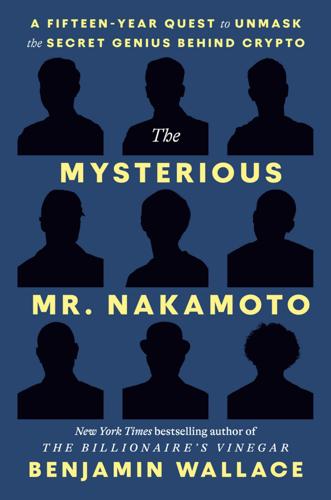
The Mysterious Mr. Nakamoto: A Fifteen-Year Quest to Unmask the Secret Genius Behind Crypto
by
Benjamin Wallace
Published 18 Mar 2025
Among the inspirations that swirled in his brain were two works of fiction. One was Ayn Rand’s novel Atlas Shrugged, with its elitist libertarian fantasy of a mountain enclave named Galt’s Gulch where the world’s intellectuals could shrug the humdrum atlas and its populace of mediocrities. The other was Vernor Vinge’s science fiction novella True Names, which told the story of a group of hackers who had to operate under the cloak of “nyms” (pseudonyms) in virtual reality, against a variety of adversaries including the True Enemy (the government), in order to protect themselves in the physical world. May became convinced that the technology now existed to make these visions real: the anonymous digital cash devised by David Chaum, and the breakthroughs in cryptography that had made Chaum’s dream possible.
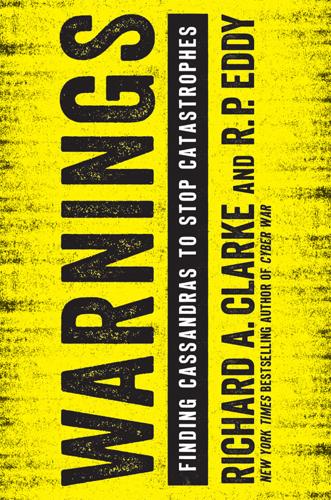
Warnings
by
Richard A. Clarke
Published 10 Apr 2017
In 2015, more than $8.5 billion was invested in the development of new AI technologies. IBM’s Watson supercomputer is hard at work performing tasks ranging from playing (and winning at) Jeopardy! to diagnosing cancer. What will Earth be like when humans are no longer the most intelligent things on the planet? As science fiction writer and computer scientist Vernor Vinge wrote, “The best answer to the question, ‘Will computers ever be as smart as humans?’ is probably ‘Yes, but only briefly.’”5 As the excitement grows, so too does fear. The astrophysicist and Nobel laureate Dr. Stephen Hawking warns that AI is “likely to be either the best or worst thing ever to happen to humanity, so there’s huge value in getting it right.”

Dawn of the New Everything: Encounters With Reality and Virtual Reality
by
Jaron Lanier
Published 21 Nov 2017
Dark Lineage There was a fresh literary scene related to VR in the 1980s called cyberpunk. It was, in my view, a continuation of E. M. Forster’s “The Machine Stops.” Dark stuff, usually; cautionary tales. Characters typically manipulated and deceived one another, or wallowed in existential malaise. Vernor Vinge wrote a novel called True Names and a little later came Neuromancer by William Gibson. I adored Neuromancer, but I had the ridiculous idea that I was called upon to brighten the cyberpunk movement. It’ll be a murky mess, trying to reconstruct old dialogue between me and Bill, but here goes: “It’ll attract people even though it ought to repel them,” I’d say.

Dreaming in Code: Two Dozen Programmers, Three Years, 4,732 Bugs, and One Quest for Transcendent Software
by
Scott Rosenberg
Published 2 Jan 2006
At the same time, biotechnology and its handmaiden, nanotechnology, will be increasing their powers at an equally explosive rate. When these changes join forces, we will have arrived at a moment that Kurzweil, along with others who share his perspective, calls “the Singularity.” The term, first popularized by the scientist and science fiction author Vernor Vinge, is borrowed from physics. Like a black hole or any similar rent in the warp and woof of space-time, a singularity is a disruption of continuity, a break with the past. It is a point at which everything changes, and a point beyond which we can’t see. Kurzweil predicts that artificial intelligence will induce a singularity in human history.
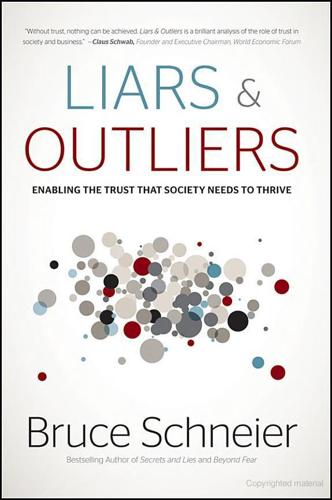
Liars and Outliers: How Security Holds Society Together
by
Bruce Schneier
Published 14 Feb 2012
Scott Adams wrote Scott Adams (1996), The Dilbert Principle: A Cubicle's-Eye View of Bosses, Meetings, Management Fads & Other Workplace Afflictions, HarperBusiness, 12. 18 years if Matthew Sherman (2009), “A Short History of Financial Deregulation in the United States,” Center for Economic and Policy Research. potential failure Alexis de Tocqueville (1835), Democracy in America, Saunders and Otley. Chapter 16 the singularity Vernor Vinge (1993), “Technological Singularity,” paper presented at the VISION-21 Symposium sponsored by NASA Lewis Research Center and the Ohio Aerospace Institute, 30–31 March. Raymond Kurzweil (2005), The Singularity is Near: When Humans Transcend Biology, Penguin Press. against the government Leonard Deutchman and Sean Morgan (2005), “The ECPA, ISPs and Obtaining E-mail: A Primer for Local Prosecutors,” American Prosecutors Research Institute.

What Technology Wants
by
Kevin Kelly
Published 14 Jul 2010
Chris Anderson Gordon Bell Katy Borner Stewart Brand Eric Brende David Brin Rob Carlson James Carse Jamais Cascio Richard Dawkins Eric Drexler Freeman Dyson George Dyson Niles Eldredge Brian Eno Joel Garreau Paul Hawken Danny Hillis Piet Hut Derrick Jensen Bill Joy Stuart Kauffman Donald Kraybill Mark Kryder Ray Kurzweil Jaron Lanier Pierre Lemonnier Seth Lloyd Lori Marino Max More Simon Conway Morris Nathan Myhrvold Howard Rheingold Paul Saffo Kirkpatrick Sale Tim Sauder Peter Schwartz John Smart Lee Smolin Alex Steffen Steve Talbot Edward Tenner Sherry Turkle Hal Varian Vernor Vinge Jay Walker Peter Warshall Robert Wright Annotated Reading List Of the hundreds of books I consulted for this project, I found the following selected ones to be the most useful for my purposes. Listed in order of importance. (The rest of my sources are listed in the Source Notes.) Autonomous Technology: Technics-Out-of-Control as a Theme in Political Thought.

Whole Earth: The Many Lives of Stewart Brand
by
John Markoff
Published 22 Mar 2022
The assumption was that “information dominance” would assure American superiority. Saffo, who was an inveterate and careful notetaker at meetings, listened as Brand spoke on the second day. He cited cyberpunk writers like William Gibson, who pointed out that technologies often played out in unforeseen ways, asserting that “the street finds its own uses for things,” and Vernor Vinge, who had forecast the advent—only decades in the future—of a “singularity” in which machines would outthink humans. Brand warned the group that we were moving from the world of global cities, from a world where citizens had lots of privacy, to the online global village, where we would have no privacy.

Rainbows End
by
Vernor Vinge
Published 1 May 2006
Robert wasn’t quite sure what they said, though he remembered that Carlos seemed a little worried for him, perhaps mistaking Robert’s raw confusion for some kind of medical emergency. Then he was down the elevator and back on the sunny plaza. And hovering immanent all around him were the worlds of art and science that humankind was busy building. What if I can have it all ? The End ABOUT THE AUTHOR Vernor Vinge is a four-time Hugo Award winner (for novels A Deepness in the Sky and A Fire Upon the Deep, and novellas “Fast Times at Fairmont High” and “The Cookie Monster”) and a four-time Nebula Award finalist. He’s one of the bestselling authors in the field and has been featured in such diverse venues as Rolling Stone, Wired, The New York Times, Esquire, and NPR’s “Fresh Air.”
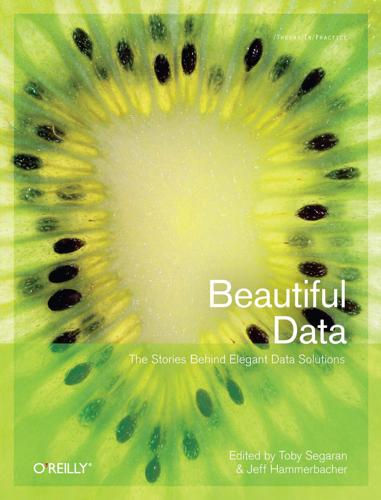
Beautiful Data: The Stories Behind Elegant Data Solutions
by
Toby Segaran
and
Jeff Hammerbacher
Published 1 Jul 2009
This field is less mature; we don’t yet know for sure what the best practices are, nor what accuracy rate to NATURAL LANGUAGE CORPUS DATA Download at Boykma.Com 239 expect, although the winner of a 2004 competition had 71% accuracy. The best performers in the competition were linguistically simple but statistically sophisticated. Document Unshredding and DNA Sequencing In Vernor Vinge’s science fiction novel Rainbows End (Tor Books), the Librareome project digitizes an entire library by tossing the books into a tree shredder, photographing the pieces, and using computer algorithms to reassemble the images. In real life, the German government’s E-Puzzler project is reconstructing 45 million pages of documents shredded by the former East German secret police, the Stasi.

The Rational Optimist: How Prosperity Evolves
by
Matt Ridley
Published 17 May 2010
New goods, old theory, and the welfare costs of trade restrictions. Journal of Development Economics 43:5–38. p. 355 ‘the world economy will be doubling in months or even weeks’. Hanson, R. 2008. Economics of the Singularity. IEEE Spectrum (June 2008) 45:45–50. p. 355 ‘a technological “singularity”’. This notion has been explored by Vernor Vinge and Ray Kurzweil. See Kurzweil, R. 2005. The Singularity Is Near. Penguin. p. 355 ‘says Stephen Levy.’ Levy, S. 2009. Googlenomics. Wired, June 2009. p. 356 ‘says the author Clay Shirky’. Shirky, C. 2008. Here Comes Everybody. Penguin. p. 356 ‘Says Kevin Kelly’. Kelly, K. 2009. The new socialism.
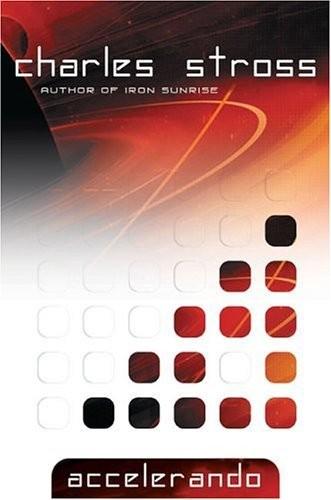
Accelerando
by
Stross, Charles
Published 22 Jan 2005
His works range from science fiction and Lovecraftian horror to fantasy. Stross is sometimes regarded as being part of a new generation of British science fiction writers who specialise in hard science fiction and space opera. His contemporaries include Alastair Reynolds, Ken MacLeod and Liz Williams. Obvious inspirations include Vernor Vinge, Neal Stephenson, William Gibson, and Bruce Sterling, among other cyberpunk and postcyberpunk writers. His first published short story, "The Boys", appeared in Interzone in 1987: his first novel, Singularity Sky was published by Ace in 2003 and was nominated for the Hugo Award. A collection of his short stories, Toast: And Other Rusted Futures appeared in 2002.
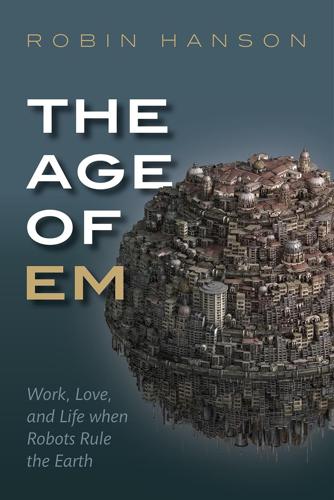
The Age of Em: Work, Love and Life When Robots Rule the Earth
by
Robin Hanson
Published 31 Mar 2016
Acknowledgments For their comments, I thank Paul Christiano, Peter Twieg, Katja Grace, Carl Shulman, Tyler Cowen, Fabio Rojas, Bonnie Hanson, Luke Muehlhauser, Nikola Danaylov, Bryan Caplan, Michael Abramowicz, Gaverick Matheny, Paul Crowley, Peter McCluskey, Sam Wilson, Chris Hibbert, Thomas Hanson, Daniel Houser, Kaj Sotala, Rong Rong, David Friedman, Michael LaTorra, Ben Goertzel, Steve Omohundro, David Levy, Jim Miller, Mike Halsall, Peggy Jackson, Jan-Erik Strasser, Robert Lecnik, Andrew Hanson, Shannon Friedman, Karl Mattingly, Ken Kittlitz, Teresa Hartnett, Giulio Prisco, David Pearce, Stephen Van Sickle, David Brin, Chris Yung, Adam Gurri, Matthew Graves, Dave Lindbergh, Scott Aaronson, Gary Drescher, Robert Koslover, Don Hanson, Michael Raimondi, William MacAskill, Eli Dourado, David McFadzean, Bruce Brewington, Marc Ringuette, Daniel Miessler, Keith Henson, Garett Jones, Alex Tabarrok, Lee Corbin, Norman Hardy, Charles Zheng, Stuart Armstrong, Vernor Vinge, Ted Goertzel, Mark Lillibridge, Michael Chwe, Olle Häggström, Jaan Tallinn, Joshua Fox, Chris Hallquist, Joshua Fox, Kevin Simler, Eric Falkenstein, Lotta Moberg, Ute Shaw, Matt Franklin, Nick Beckstead, Robyn Weaving, François Rideau, Eloise Rosen, Peter Voss, Scott Sumner, Phil Goetz, Robert Rush, Donald Prell, Olivia Gonzalez, Bradley Andrews, Keith Adams, Agustin Lebron, Karl Wiberg, Thomas Malone, Will Gordon, Philip Maymin, Henrik Jonsson, Mark Bahner, Adam Lapidus, Tom McKendree, Evelyn Mitchell, Jacek Stopa, Scott Leibrand, Paul Ralley, Anders Sandberg, Eli Lehrer, Michael Klein, Lumifer, Joy Buchanan, Miles Brundage, Harry Beck, Michael Price, Tim Freeman, Vladimir M., David Wolf, Randall Pickett, Zack Davis, Tom Bell, Harry Hawk, Adam Kolber, Dean Menk, Randall Mayes, Karen Maloney, Brian Tomasik, Ramez Naam, John Clark, Robert de Neufville, Richard Bruns, Keith Mansfield, Gordon Worley, Giedrius, Peter Garretson, Christopher Burger, Nithya Sambasivam, Zachary Weinersmith, Luke Somers, Barbara Belle, Jake Selinger, Geoffrey Miller, Arthur Breitman, Martin Wooster, Daniel Boese, Oge Nnadi, Joseph Mela, Diego Caleiro, Daniel Lemire, Emily Perry, Jess Riedel, Jon Perry, Eli Tyre, Daniel Erasmus, Emmanuel Saadia, Erik Brynjolfsson, Anamaria Berea, Niko Zinovii, Matthew Farrell, Diana Fleischman, and Douglas Barrett.

Robot Rules: Regulating Artificial Intelligence
by
Jacob Turner
Published 29 Oct 2018
Ruminoff, Vol. 6 (New York: Academic Press, 1965). 106Nick Bostrom, “How Long Before Superintelligence?”, International Journal of Future Studies, 1998, vol. 2.. 107 The singularity was conceived of shortly after the advent of modern AI studies, having been introduced by John von Neumann in 1958 and then popularised by Vernor Vinge, in “The Coming Technological Singularity: How to Survive in the Post-human Era” (1993), available at: https://edoras.sdsu.edu/~vinge/misc/singularity.html, accessed 22 June 2018 and subsequently by Ray Kurzweil, The Singularity Is Near: When Humans Transcend Biology (New York: Viking Press, 2005). 108In 1968, a Scottish chess champion bet AI pioneer John McCarthy £500 that a computer would not be able to beat him by 1979.
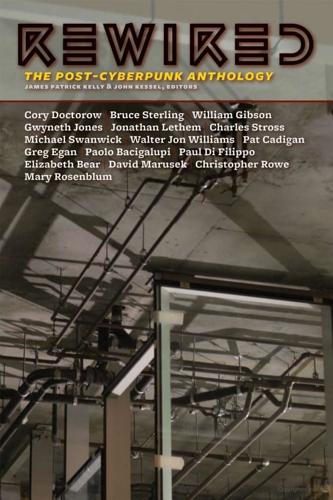
Rewired: The Post-Cyberpunk Anthology
by
James Patrick Kelly
and
John Kessel
Published 30 Sep 2007
singular The stories in this collection are too various for us to draw a tidy summary of what twenty-first-century cyberpunk is about, nor do we see the profit in it. However, so many of them imply or actually explore a post-human future that we would be remiss if we failed to point out that a logical consequence of much of cyberpunk extrapolation is the singularity. Vernor Vinge, by no means a cyberpunk, although highly respected by them, first proposed the notion of a technological singularity in 1993. Briefly, he contemplates a moment in history in which runaway technology causes a change “comparable to the rise of human life on Earth. The precise cause of this change is the imminent creation by technology of entities with greater-than-human intelligence.”

Scale: The Universal Laws of Growth, Innovation, Sustainability, and the Pace of Life in Organisms, Cities, Economies, and Companies
by
Geoffrey West
Published 15 May 2017
Until it was popularized by Kurzweil in his 2005 book The Singularity Is Near: When Humans Transcend Biology, “singularity” was a term that was hardly used colloquially. Building on an earlier idea of a “technological singularity” introduced in 1993 by the science-fiction writer and computer scientist Vernor Vinge, Kurzweil proposed that we are approaching a singularity in which our bodies and brains will be augmented by genetic alterations, nanotechnology, and artificial intelligence to become hybrid cyborgs no longer bound by the constraints of biology. It was suggested that this would result in a collective intelligence that will be enormously more powerful than all present human intelligence combined.
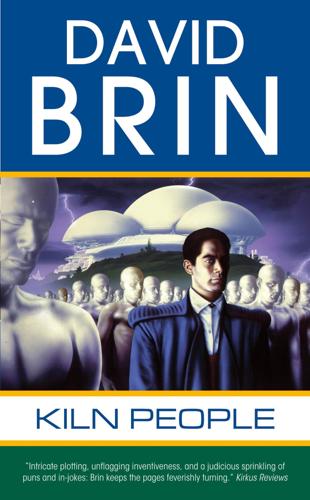
Kiln People
by
David Brin
Published 15 Jan 2002
But that's just part of the tradition in a genre that thrives on the unusual and loves to take on clichés. I'd like to thank those who provided assistance, especially with critical readings of early drafts, and with insights on the historical, literary, and philosophical implications of golems. Special appreciation goes to Cheryl Brigham, Beth Meacham, Stefan Jones, Vernor Vinge, Tappan King, Wil McCarthy, Ralph Vicinanza, John Douglas, Lou Aronica, Mason Rourman, Steve Sloan, Mark Grygier, Steve Jackson, Joe Miller, Vince Gerardis, Beverly Price, Stephen Potts, Hodge Cabtree, Robin Hanson, Steven Koerber, Alberto Monteiro, Steinn Sigurdsonn, William Calvin, Trevor Sands, James Moore, Nick Arnett, Ruben Krasnopolsky, Robert Qualkinbush, Jim Kruggel, Tamara Boyd, Manoj Kasichainula, Pat Mannion, Amy Sterling Casil, Daniel Jensen, Rachel Heslin, Alex Spehr, Lisa Gay, Bret Marquis, Brian Sidlauskas, Stella Bloom, Rae Paarlberg, Joshua Knorr, Dr.
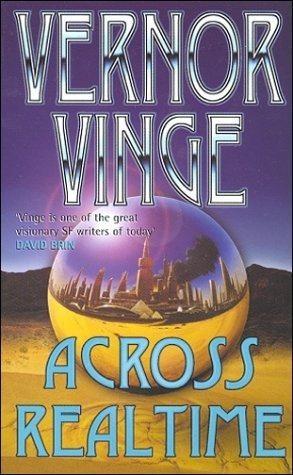
Across Realtime
by
Vernor Vinge
Published 1 Jan 1986
Vernor Vinge Across Realtime Book I. The Peace War - Flashback - One hundred kilometers below and nearly two hundred away, the shore of the Beaufort Sea didn't look much like the common image of the arctic: Summer was far advanced in the Northern Hemisphere, and a pale green spread across the land, shading here and there to the darker tones of grass. Life had a tenacious hold, leaving only an occasional penin-sula or mountain range gray and bone. Captain Allison Parker, USAF, shifted as far as the restraint harness would permit, trying to get the best view she could over the pilot's shoulder.

Elon Musk
by
Walter Isaacson
Published 11 Sep 2023
At some point, biological brainpower would be dwarfed by digital brainpower. In addition, new AI machine-learning systems could ingest information on their own and teach themselves how to generate outputs, even upgrade their own code and capabilities. The term “singularity” was used by the mathematician John von Neumann and the sci-fi writer Vernor Vinge to describe the moment when artificial intelligence could forge ahead on its own at an uncontrollable pace and leave us mere humans behind. “That could happen sooner than we expected,” Musk said in an ominous, flat tone. For a moment I was struck by the oddness of the scene. We were sitting on a suburban patio by a tranquil backyard swimming pool on a sunny spring day, with two bright-eyed twins learning to toddle, as Musk somberly speculated about the window of opportunity for building a sustainable human colony on Mars before an AI apocalypse destroyed Earthly civilization.

Global Catastrophic Risks
by
Nick Bostrom
and
Milan M. Cirkovic
Published 2 Jul 2008
Millennia/ tendencies in responses to apocalyptic threats 79 4.5 Contemporary techno-millennialism 4. 5 . 1 The s i n gu l a rity a n d tech n o - m i llen n ia l i s m Joel Garreau's (2006) recent book on the psychoculture of accelerating change, Radical Evolution: The Promise and Peril of Enhancing Our Minds, Our Bodies - and What It Means to Be Human, is structured in three parts: Heaven, Hell and Prevail. In the H eaven scenario he focuses on the predictions of inventor Ray Kurzweil, summarized in his 2005 book, The Singularity Is Near. The idea of a techno-millennial ' Singularity' was coined in a 1993 paper by mathematician and science fiction author Vernor Vinge. In physics 'singularities' are the centres of black holes, within which we cannot predict how physical laws will work. In the same way, Vinge said, greater-than-human machine intelligence, multiplying exponentially, would make everything about our world unpredictable. Most Singularitarians, like Vinge and Kurzweil, have focused on the emergence of superhuman machine intelligence.
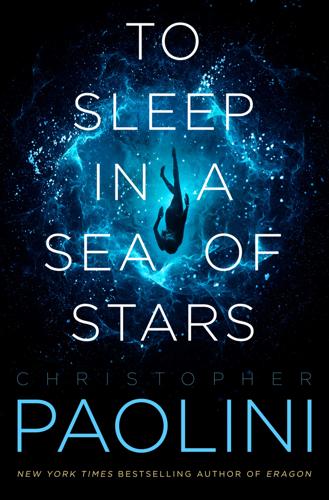
To Sleep in a Sea of Stars
by
Christopher Paolini
Published 14 Sep 2020
It was a personal challenge, and I thought it was going to save me time instead of writing a series, but it took me nearly ten years to write the darn thing anyways!” BS [laughter]: Is there any A Fire Upon the Deep influence on this? That’s a book you’ve read? CP: That is a book I’ve read, and I also had the enormous pleasure of meeting the author, Vernor Vinge, in an airport, between cons. I also enjoyed Rainbows End. BS: I get a little bit of that! It’s really a cool book—I’m loving all the names, unless I’m completely off base, these are all little inside jokes? I’ve caught some aliens— CP: Mm-hm. BS: I’ve caught some science fiction author names for some of the names of planets and space stations, I’ve definitely caught some Dune here and there, little nods.

Artificial Intelligence: A Modern Approach
by
Stuart Russell
and
Peter Norvig
Published 14 Jul 2019
Thus the first ultraintelligent machine is the last invention that man need ever make, provided that the machine is docile enough to tell us how to keep it under control. Good’s “intelligence explosion” has also been called the technological singularity by mathematics professor and science fiction author Vernor Vinge, who wrote in 1993: “Within thirty years, we will have the technological means to create superhuman intelligence. Shortly after, the human era will be ended.” In 2017, inventor and futurist Ray Kurzweil predicted the singularity would appear by 2045, which means it got 2 years closer in 24 years.